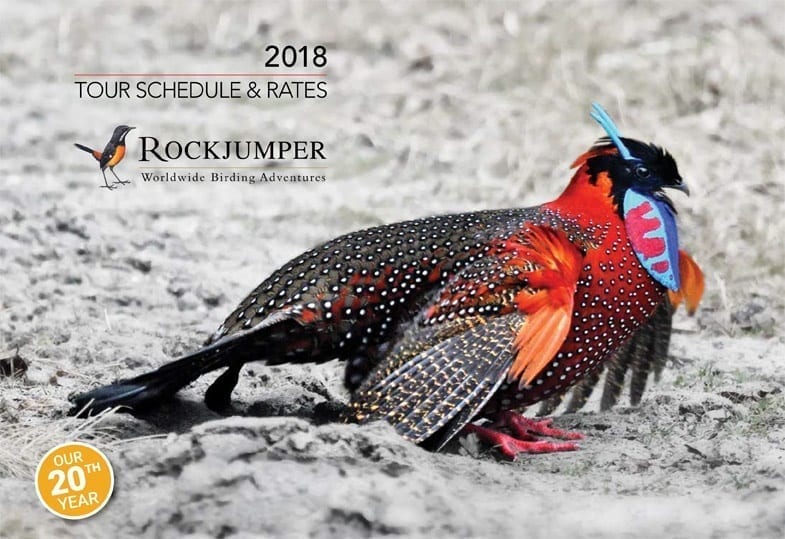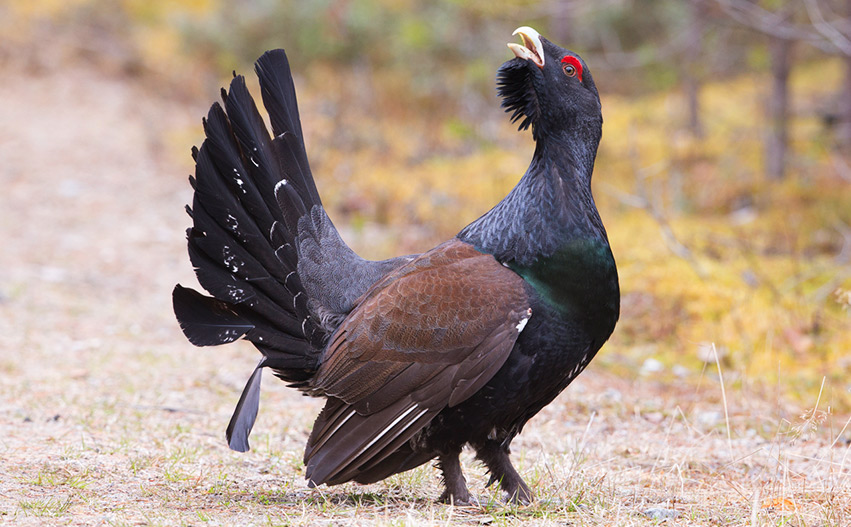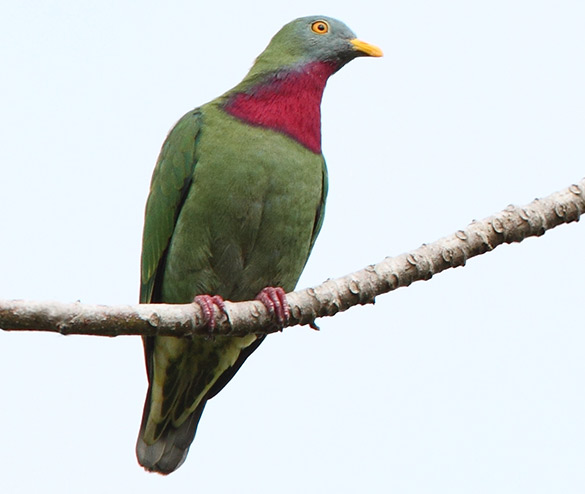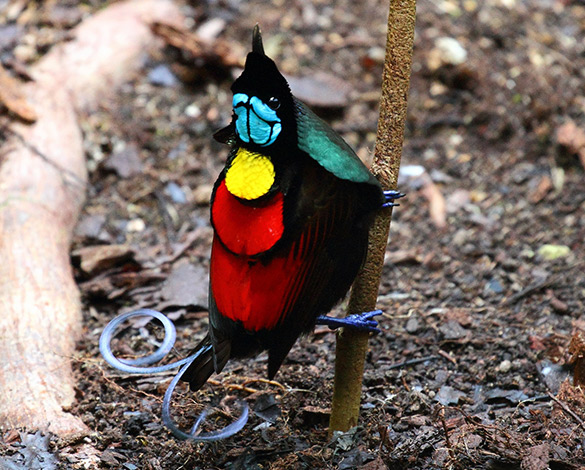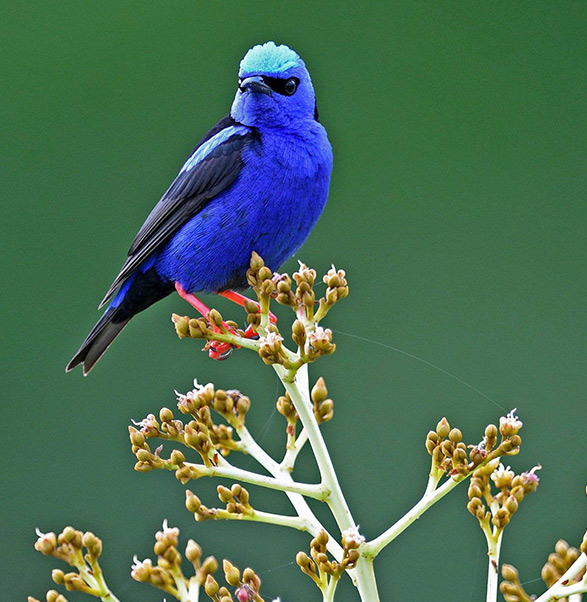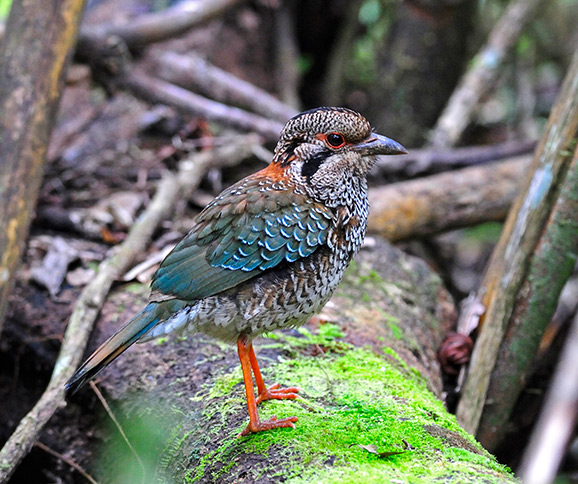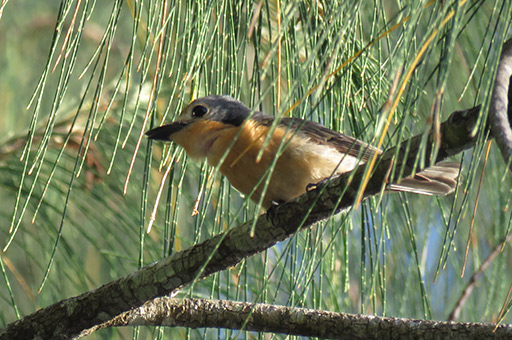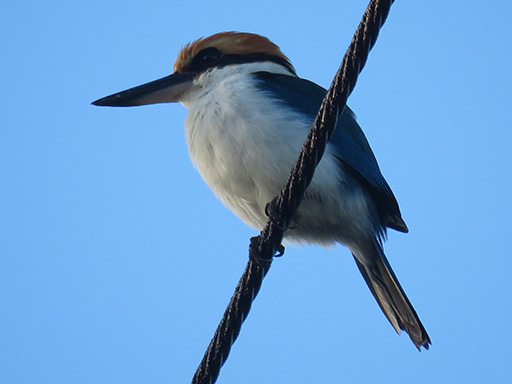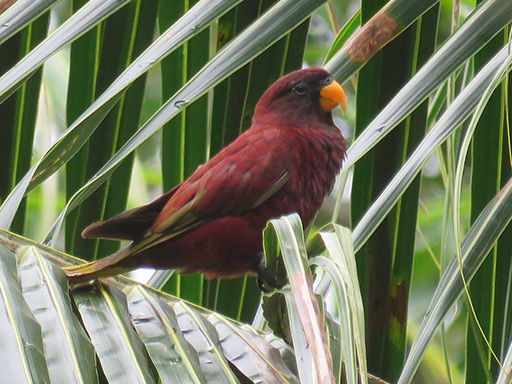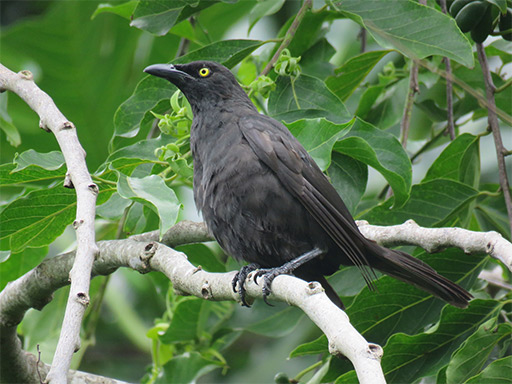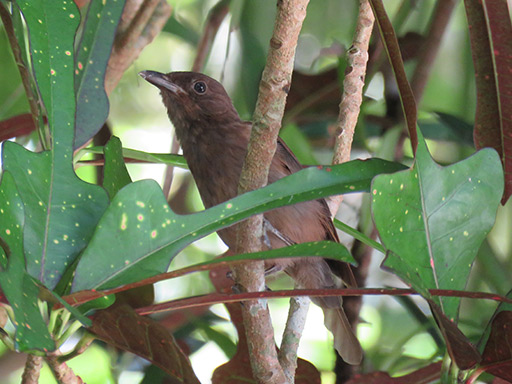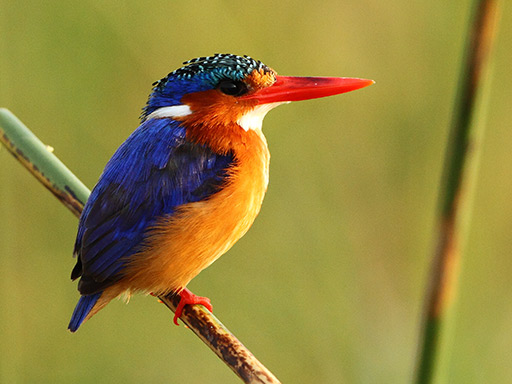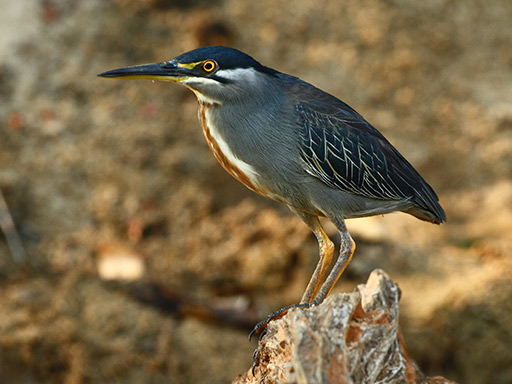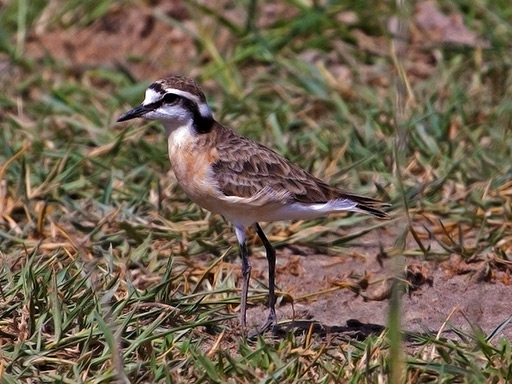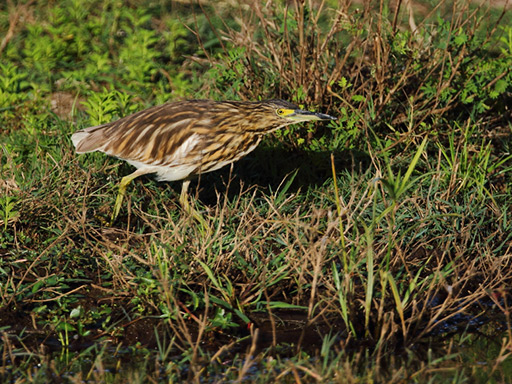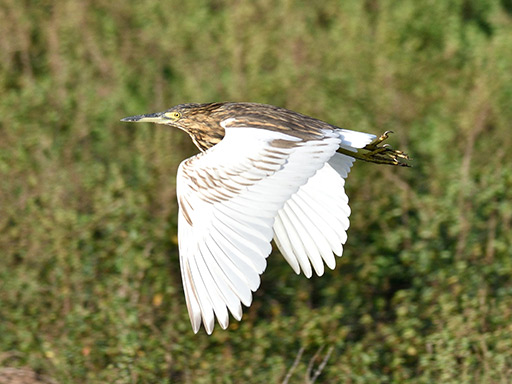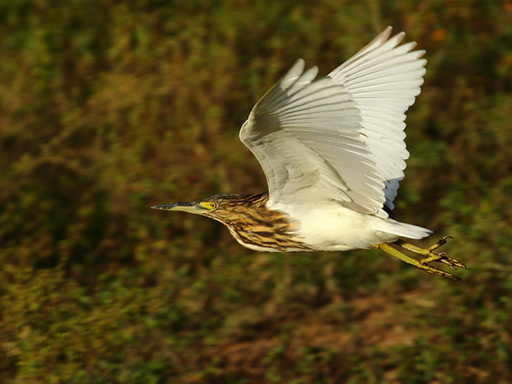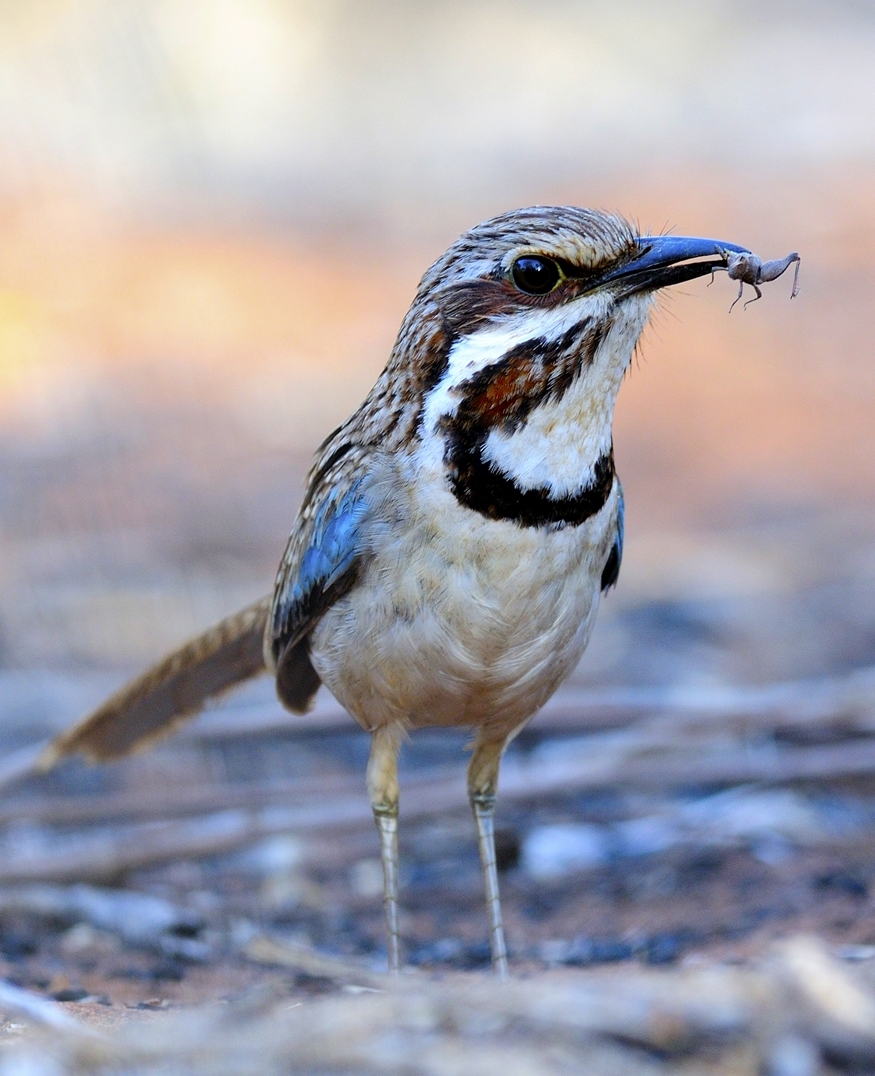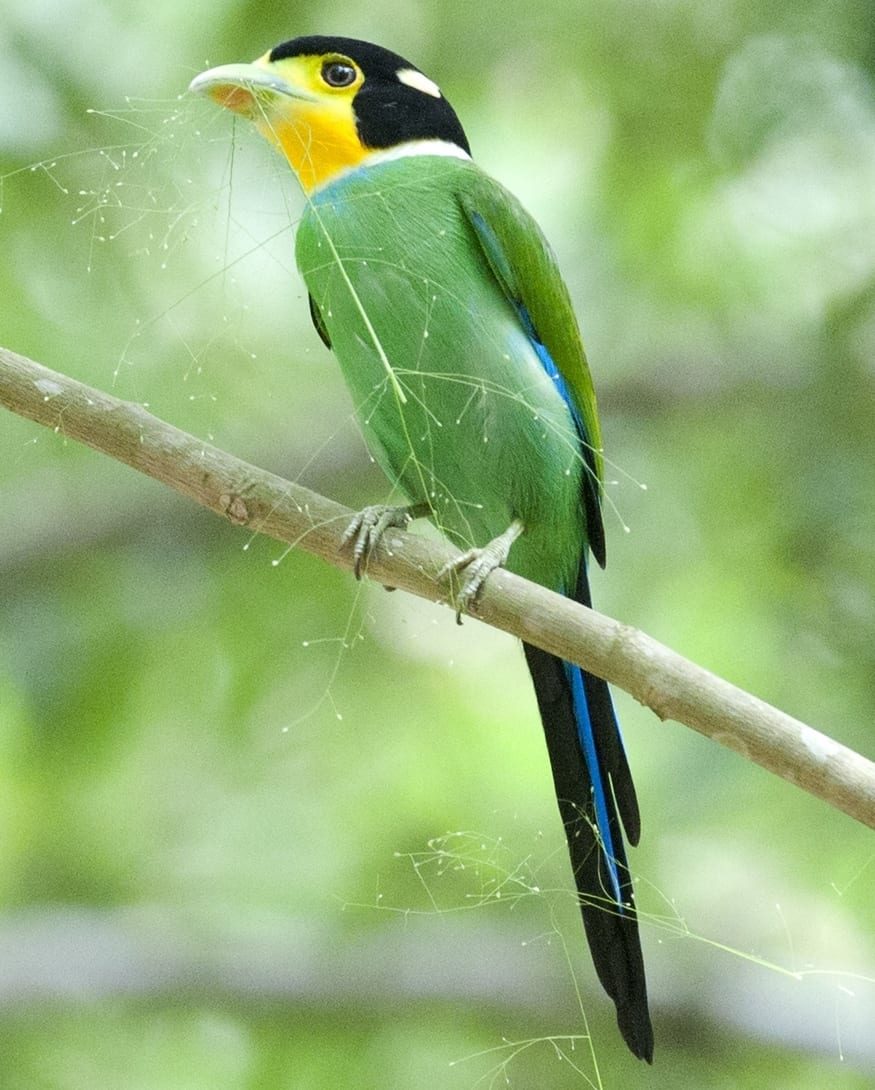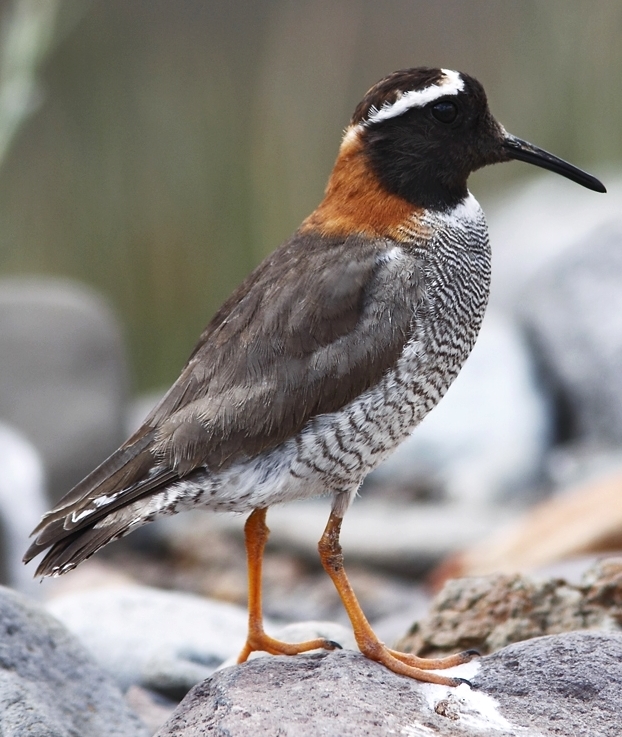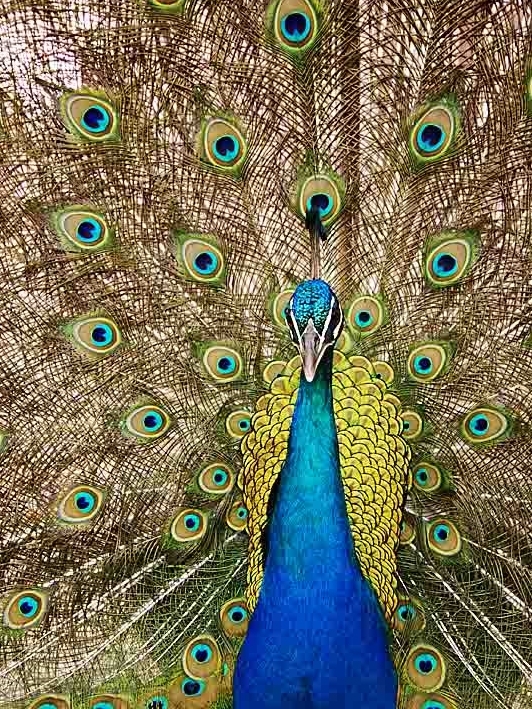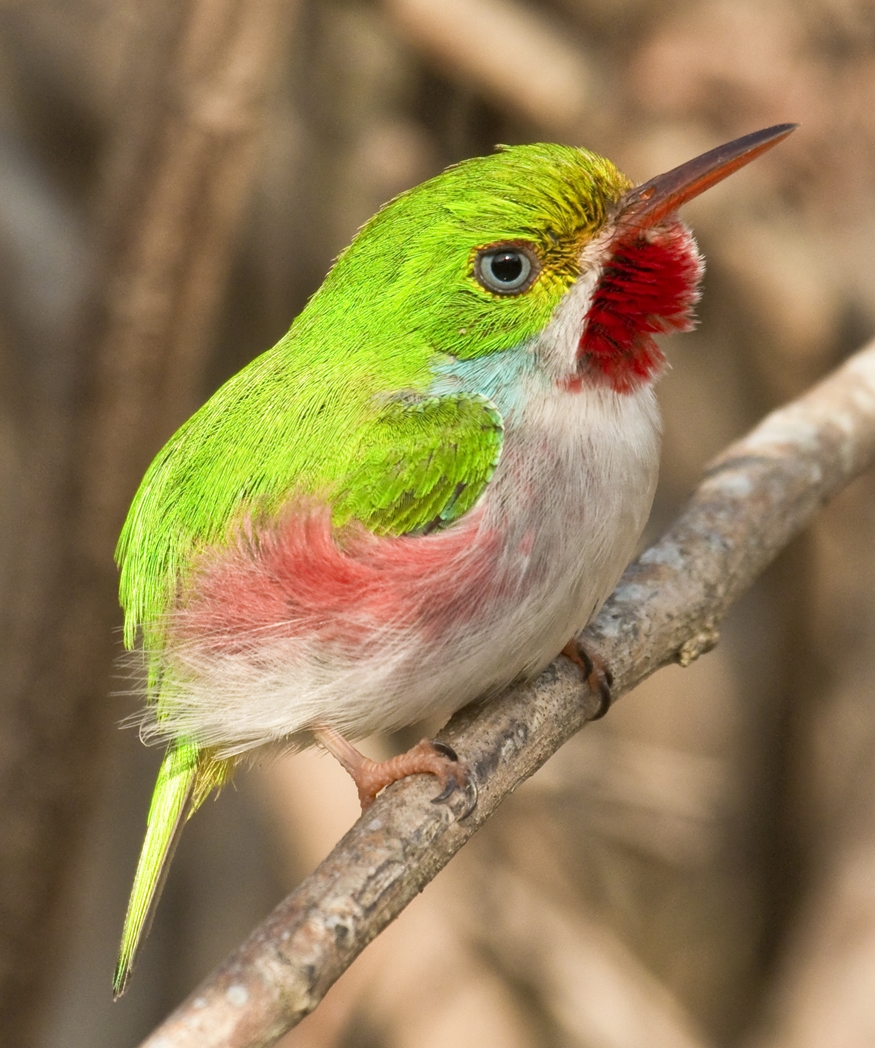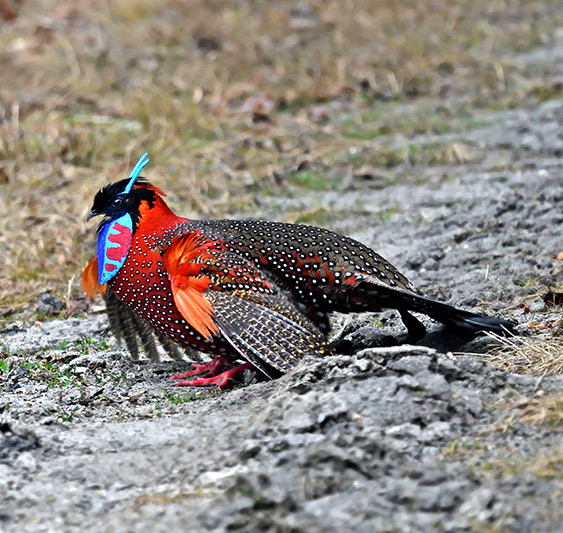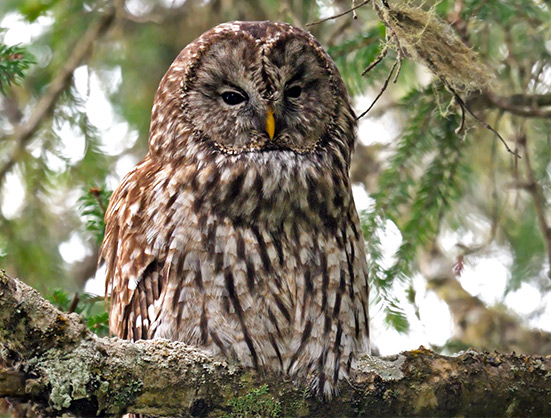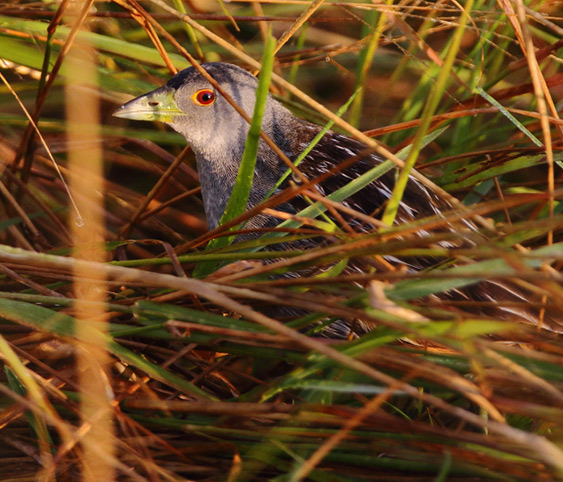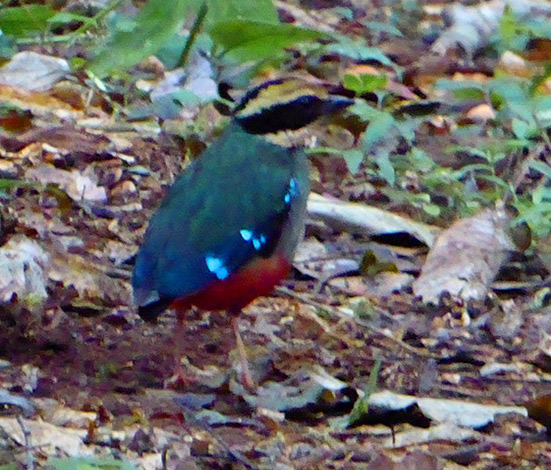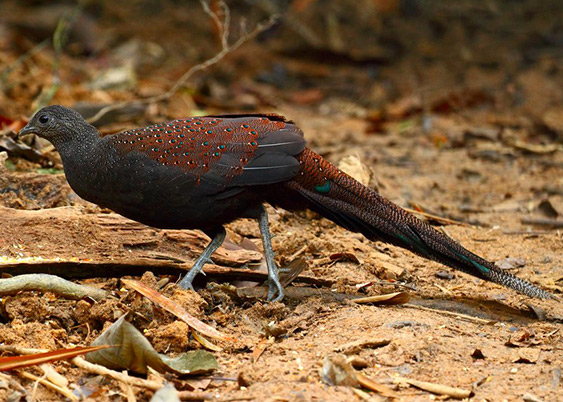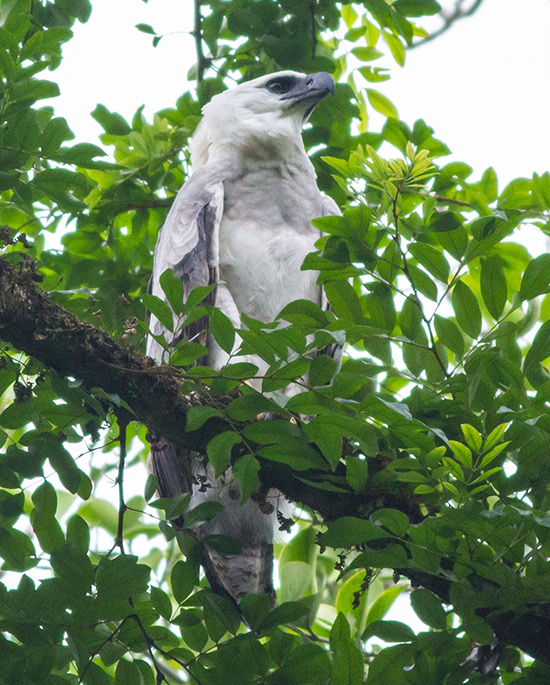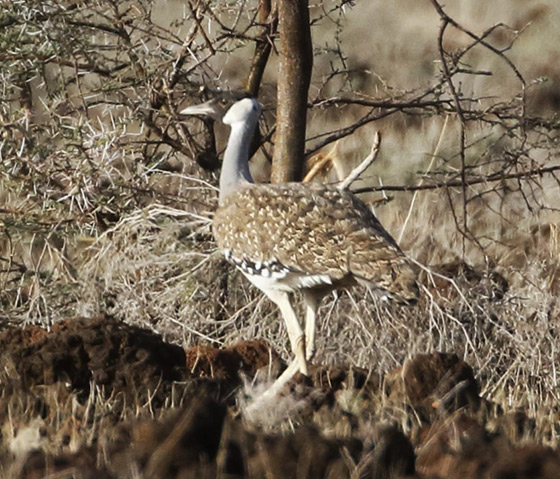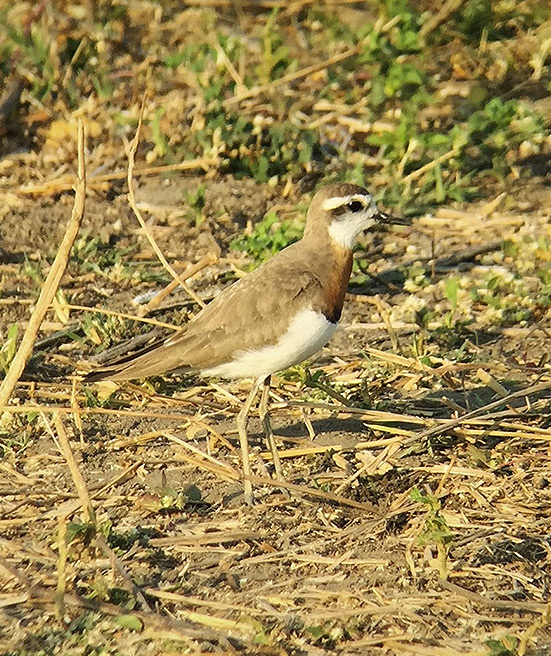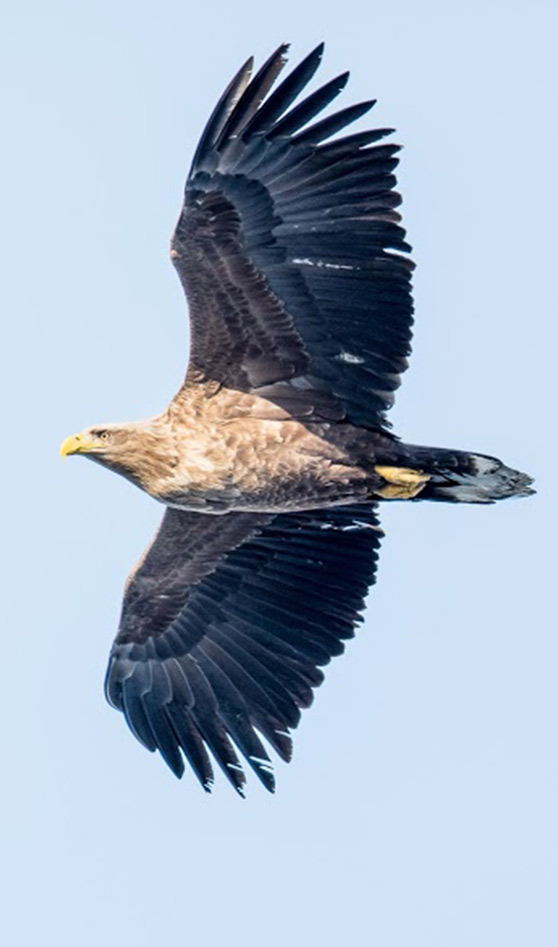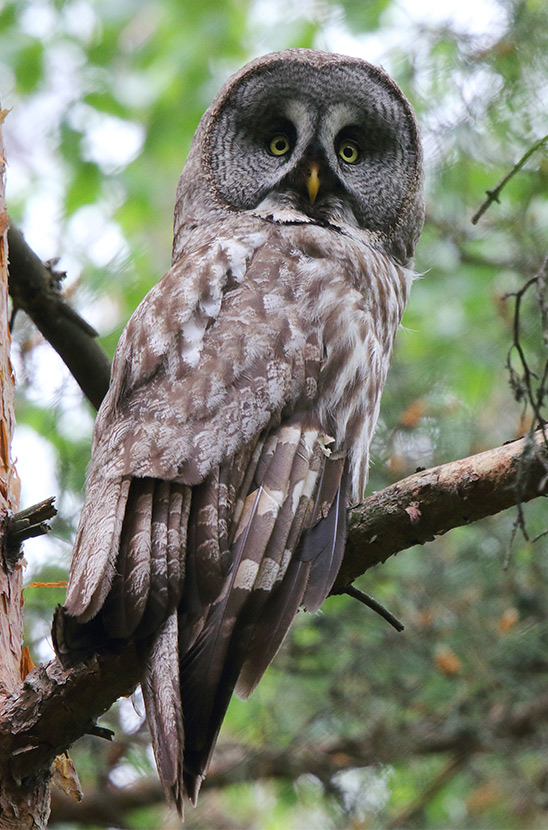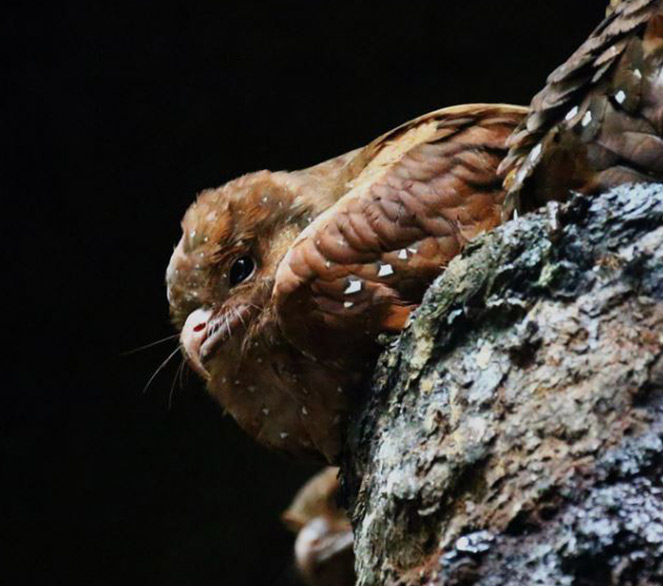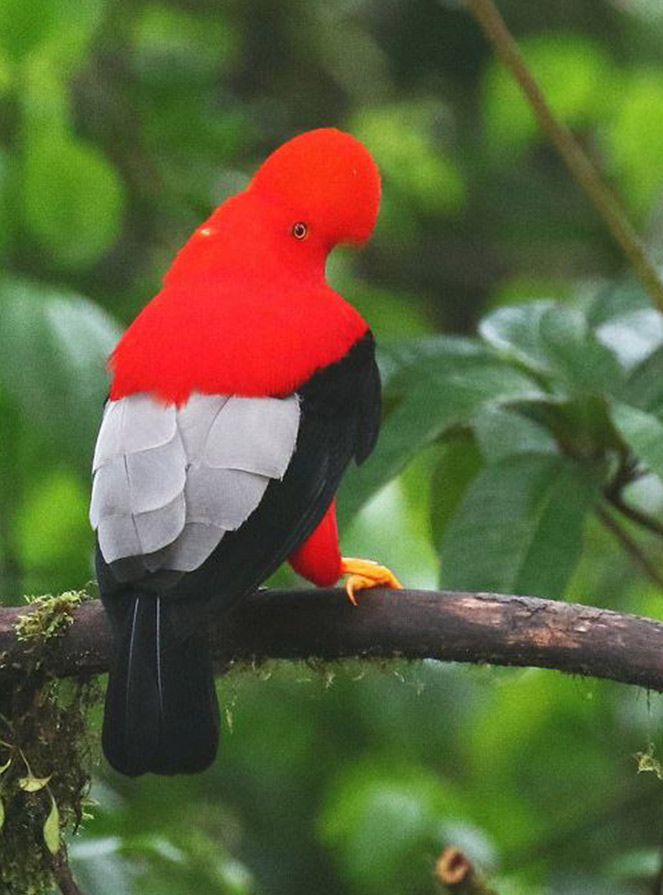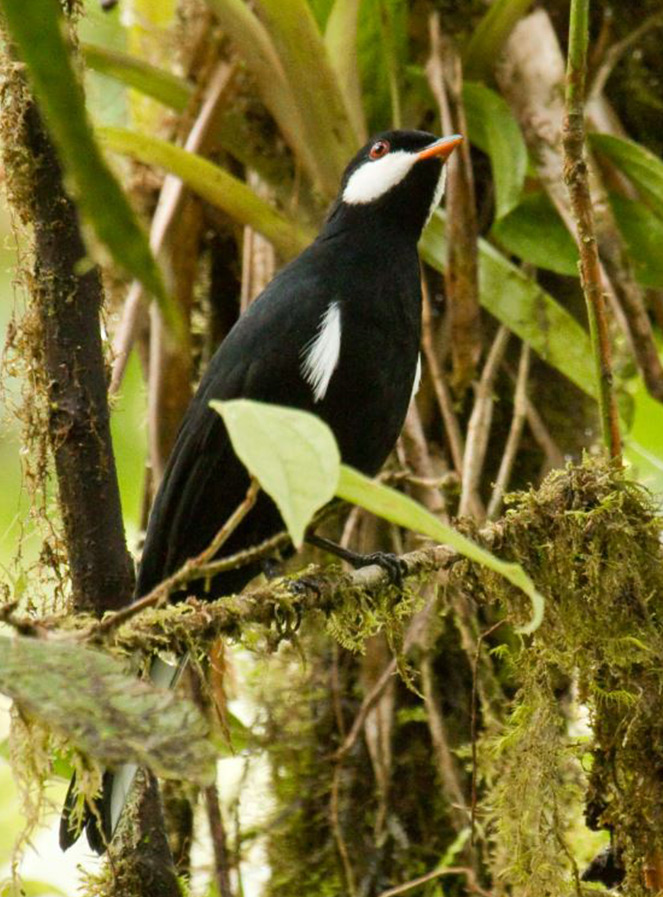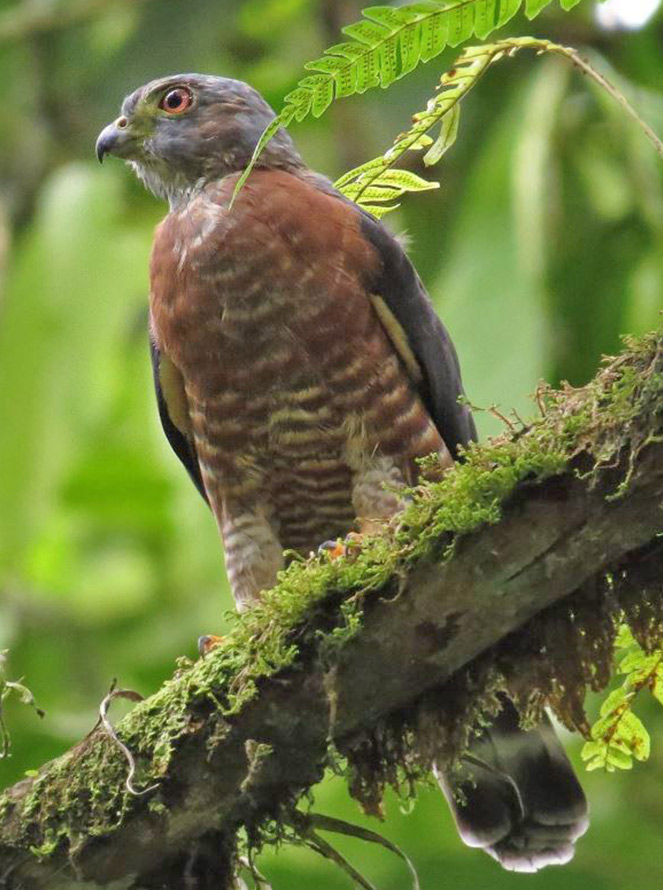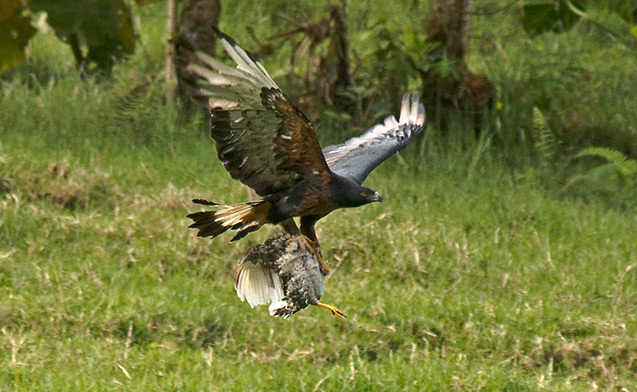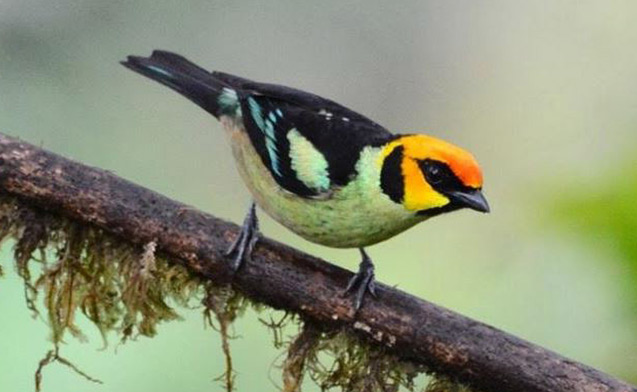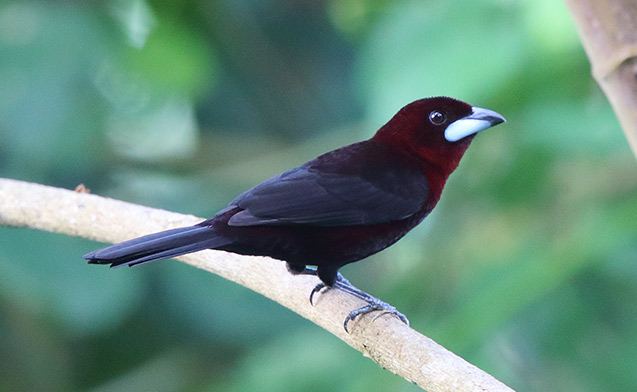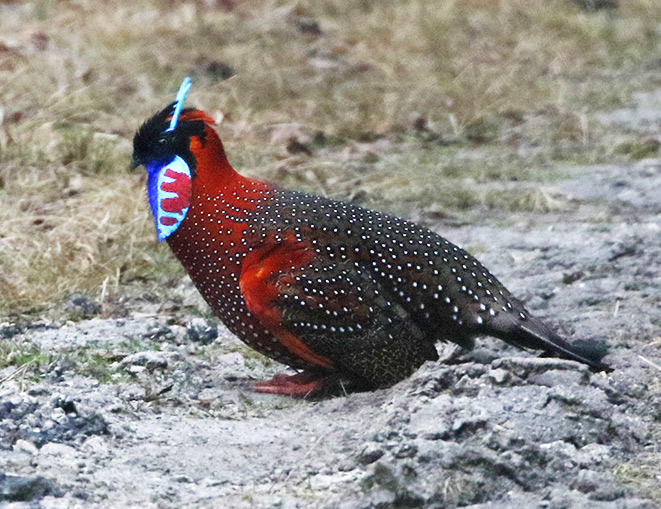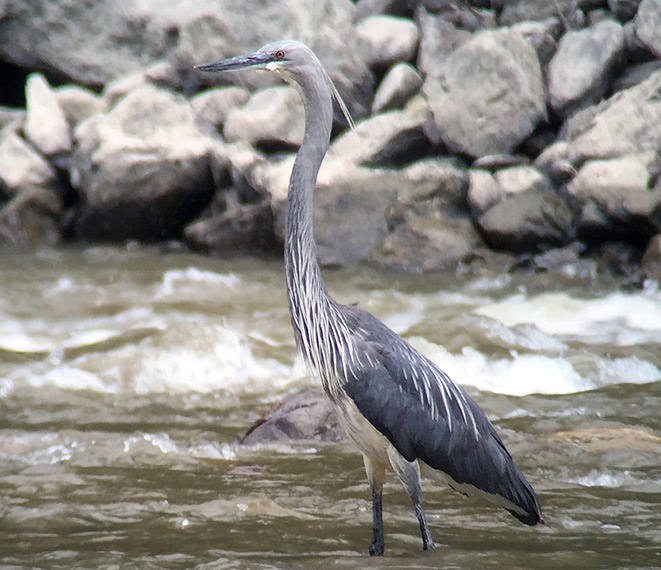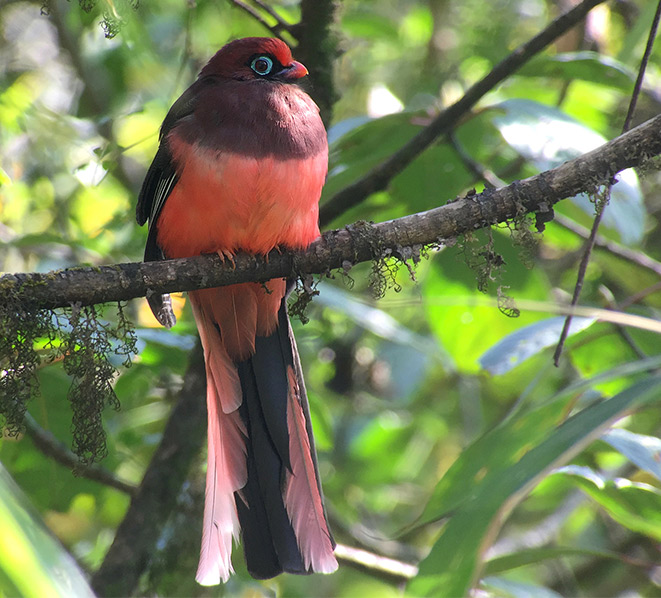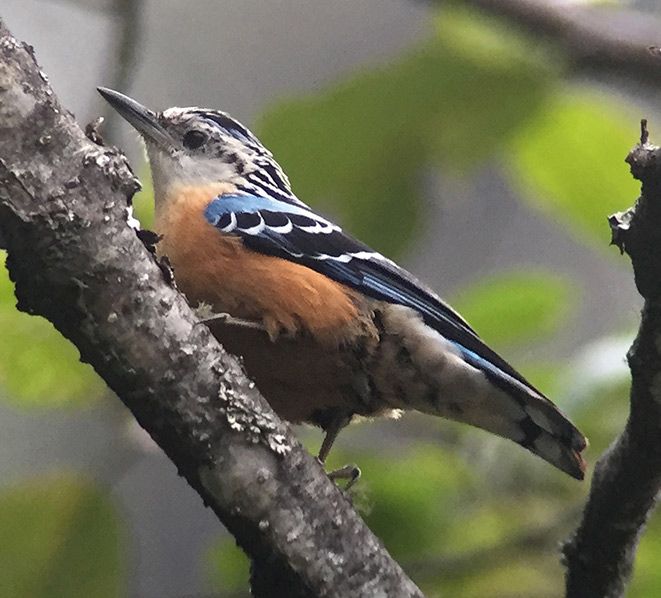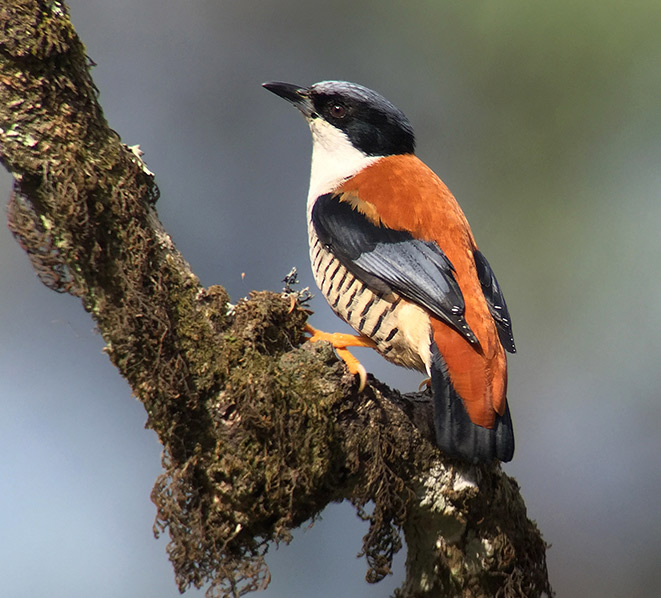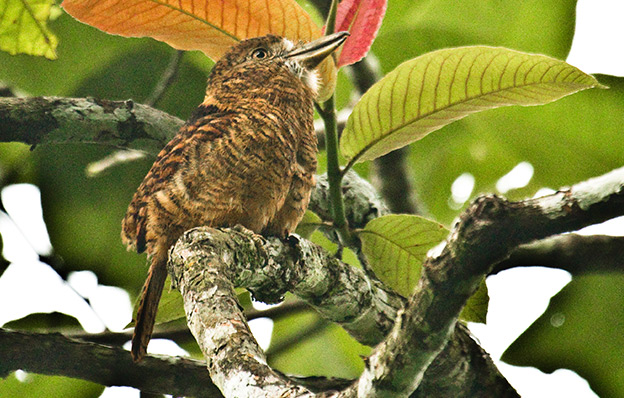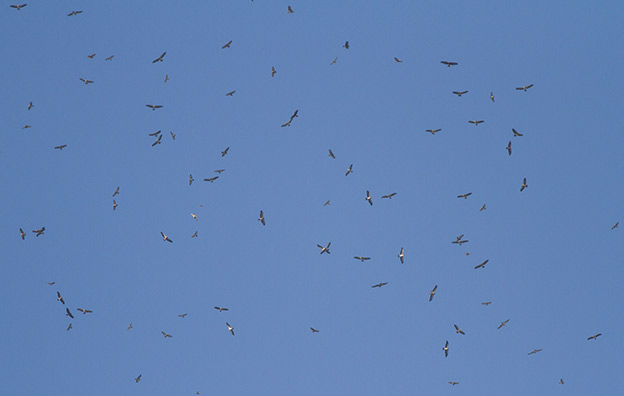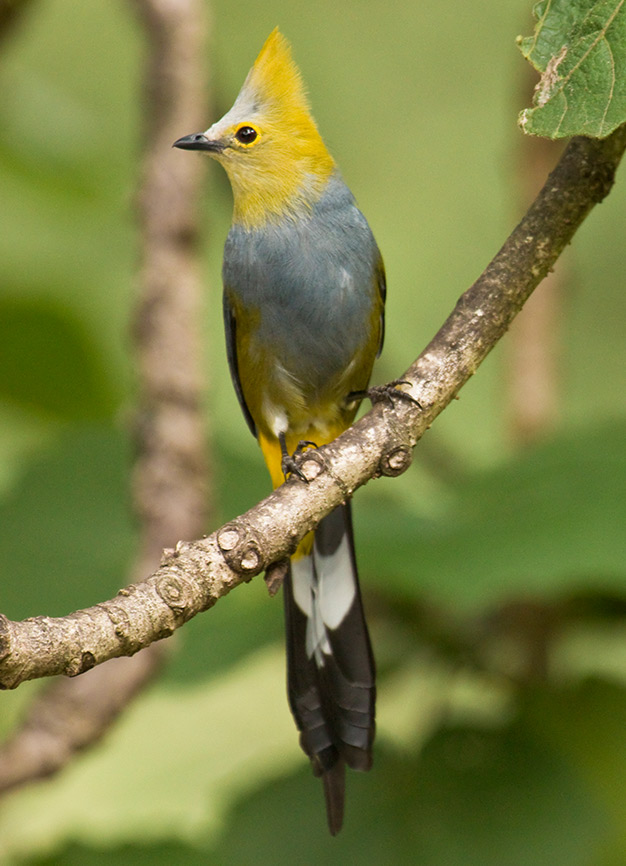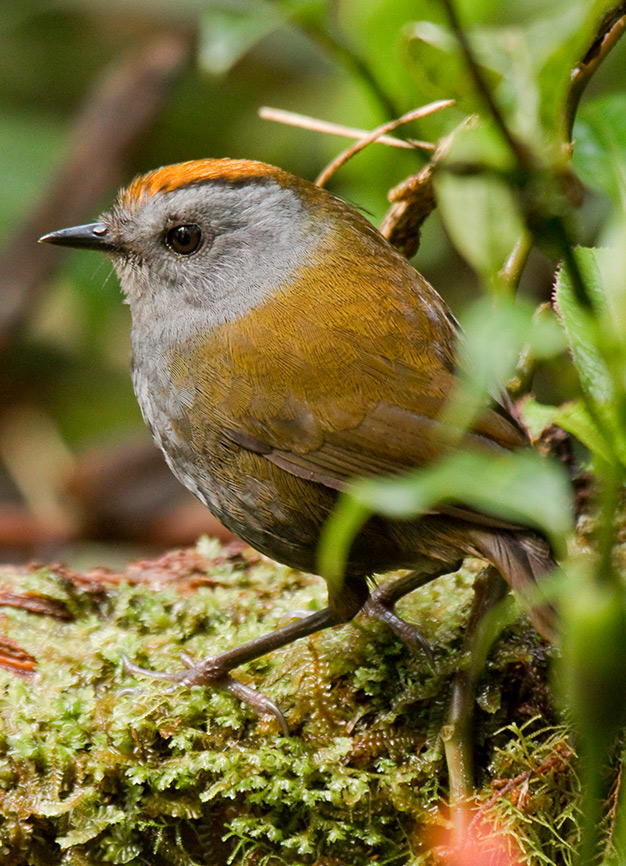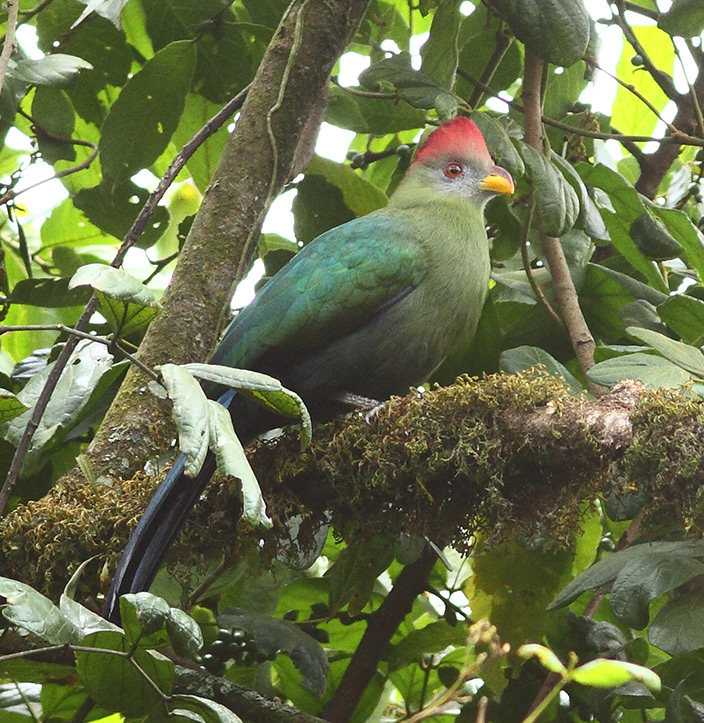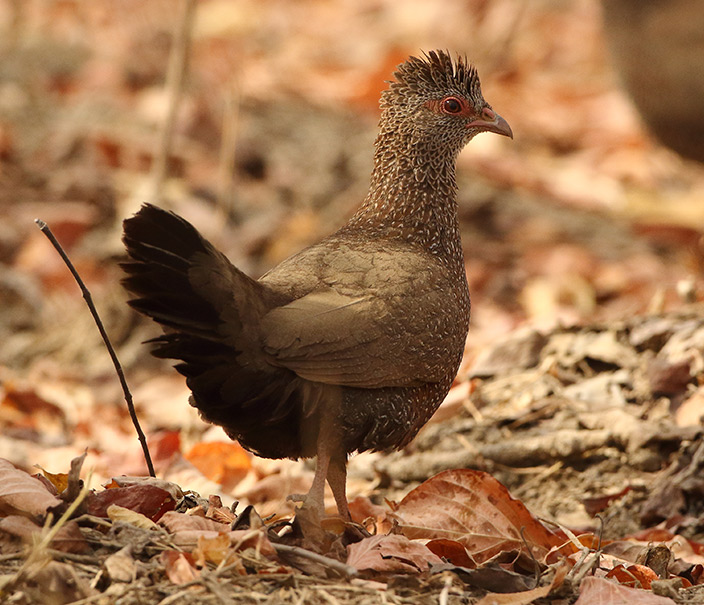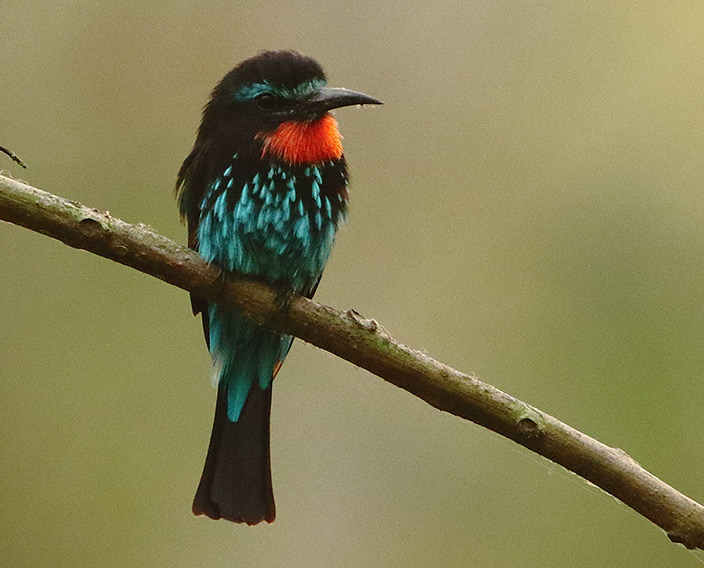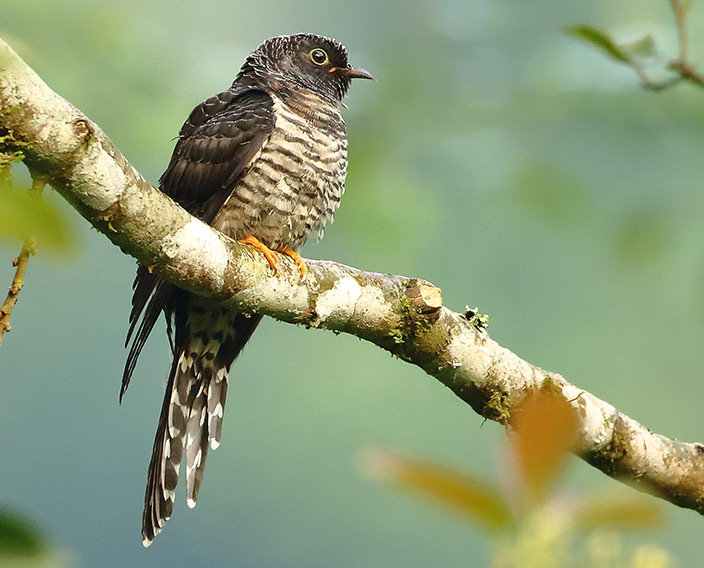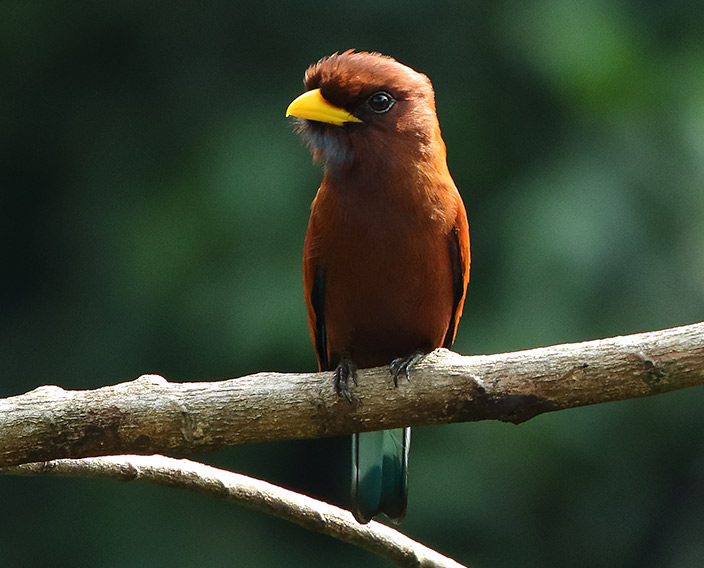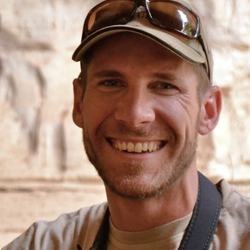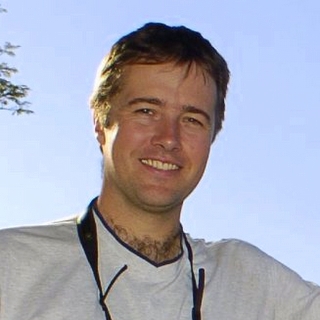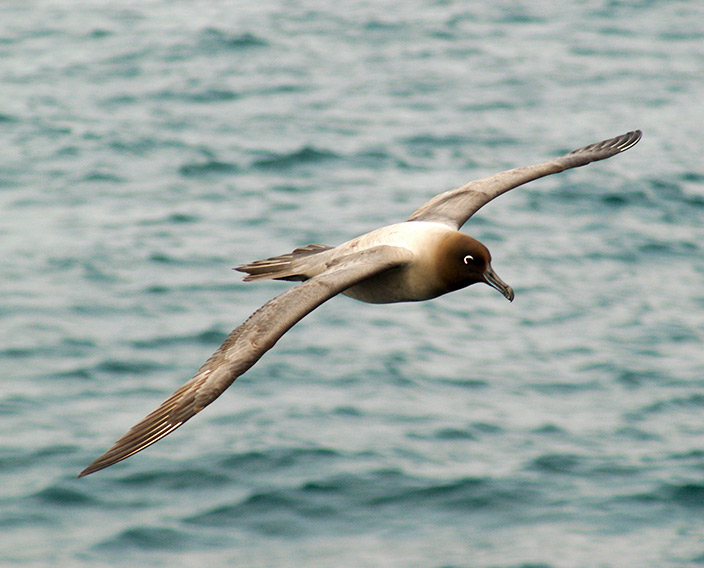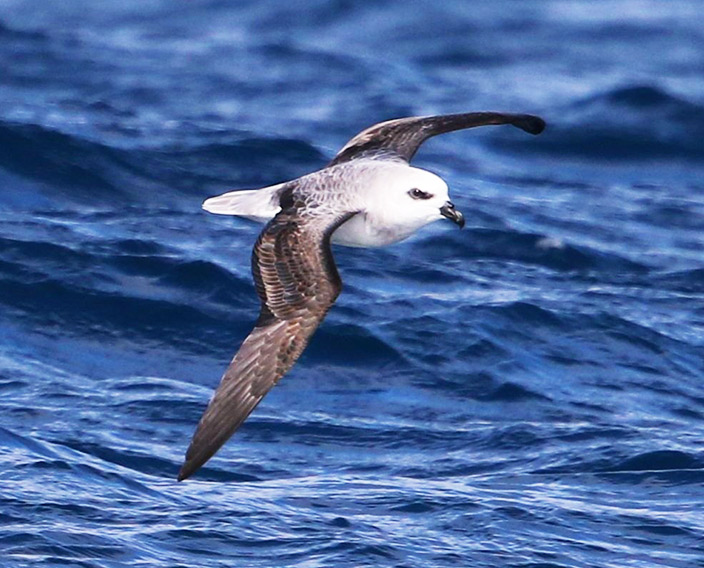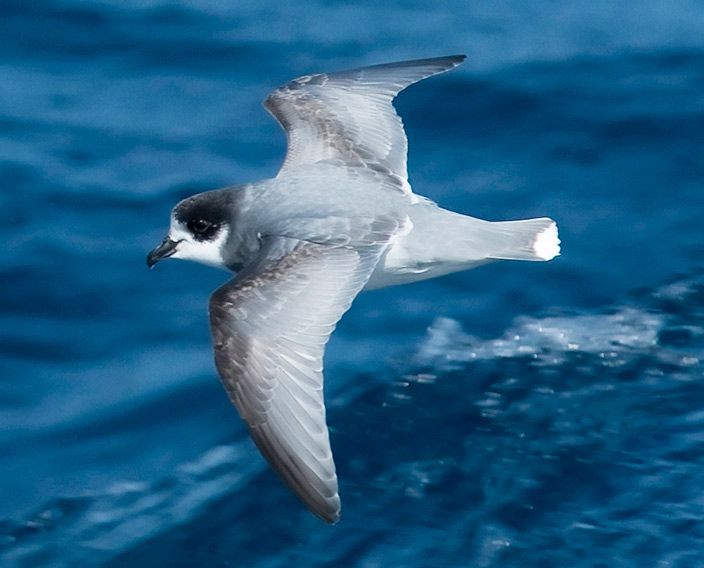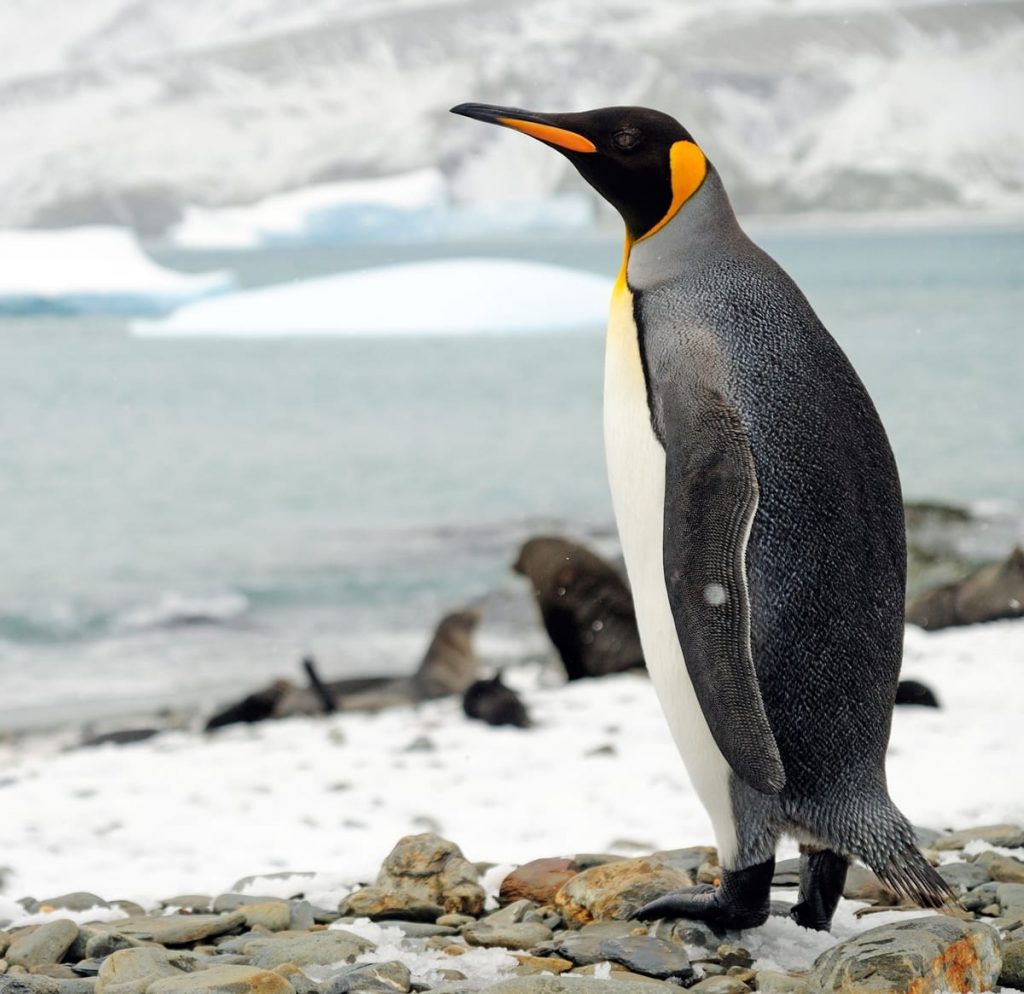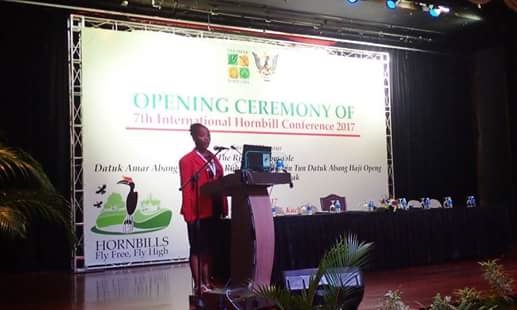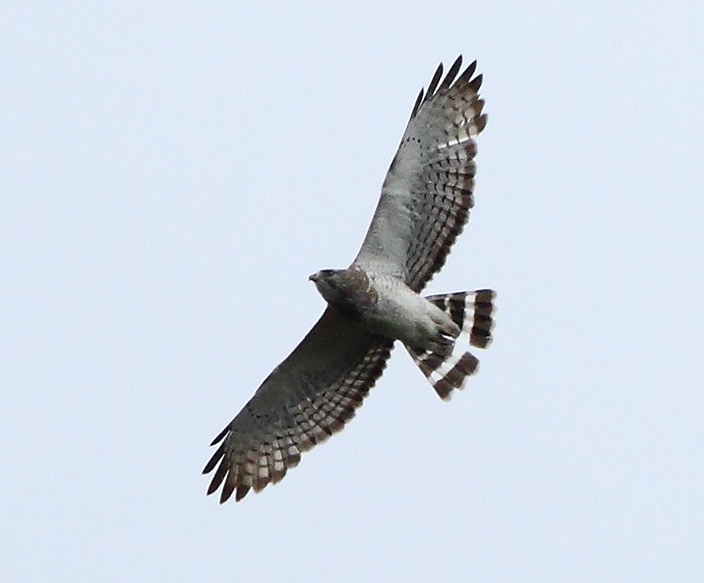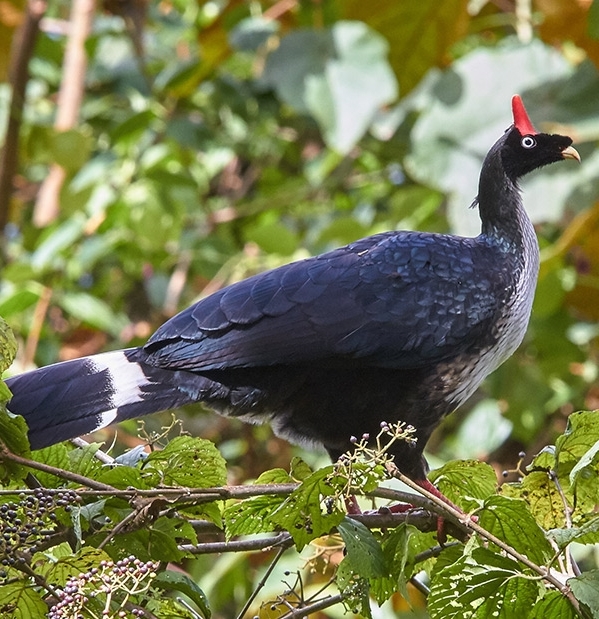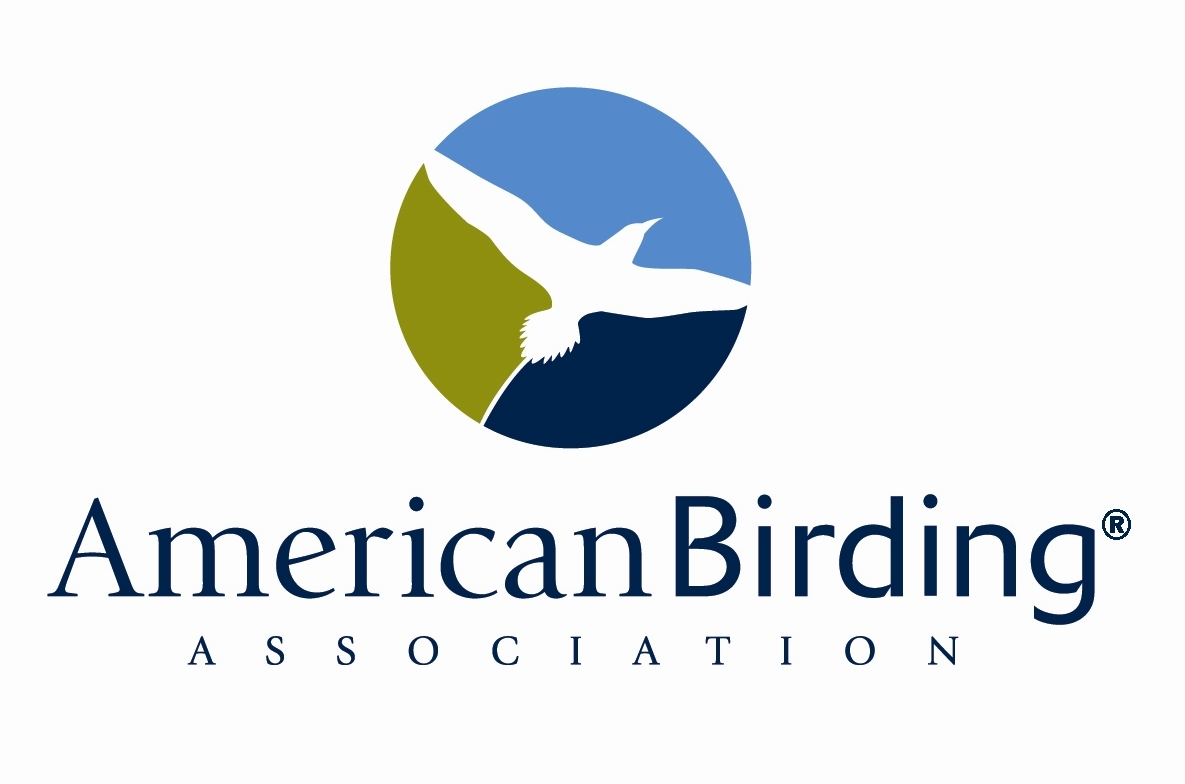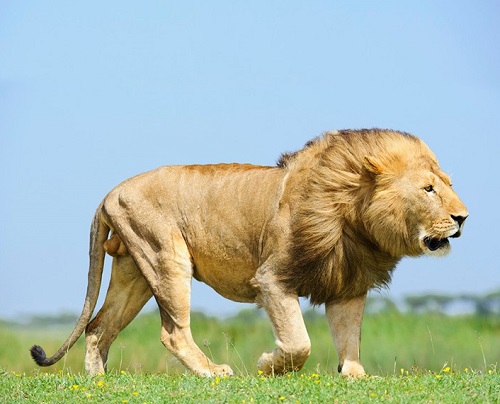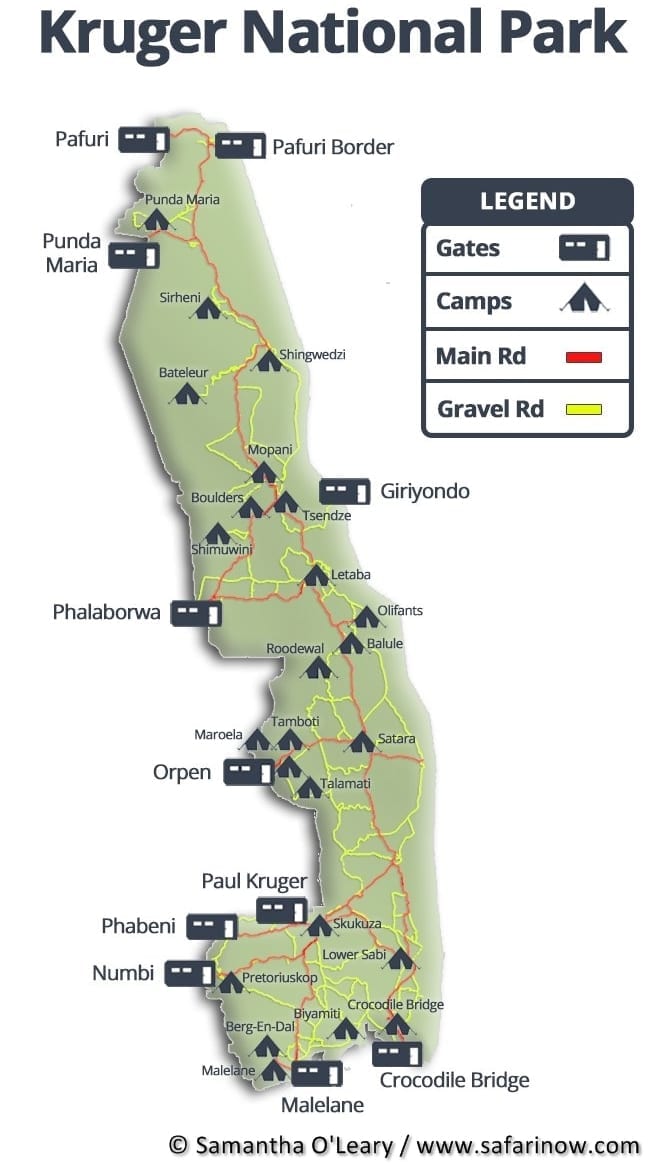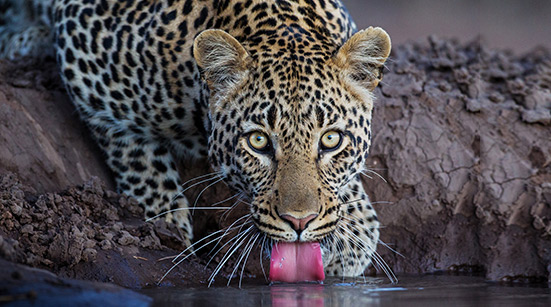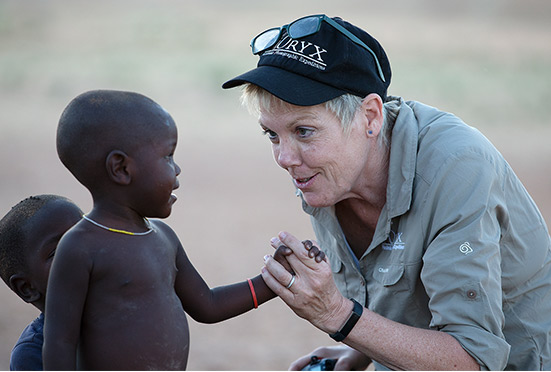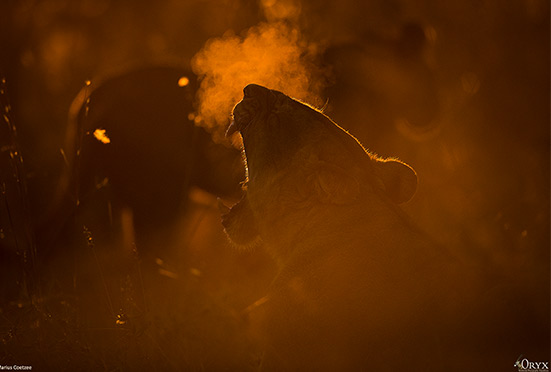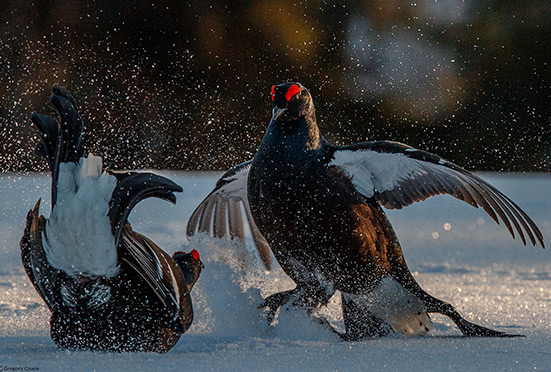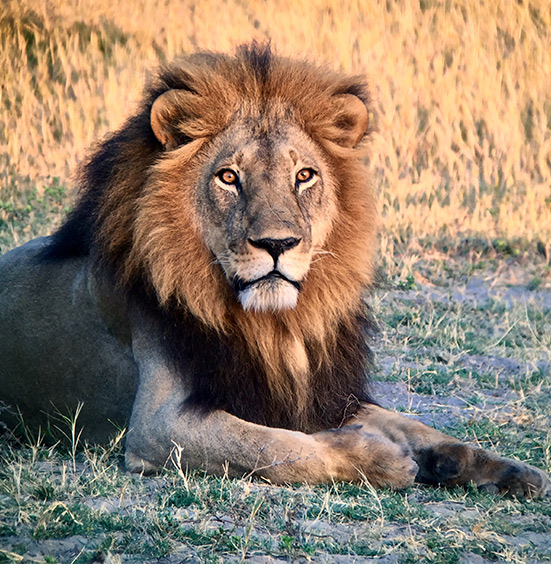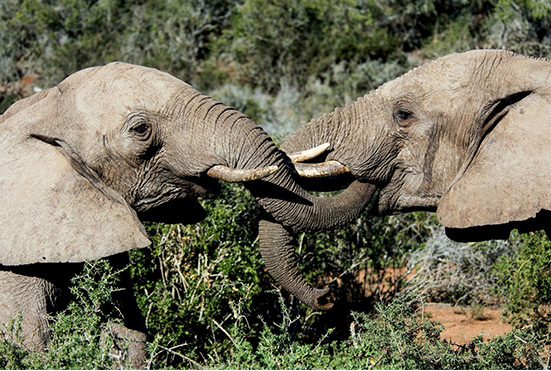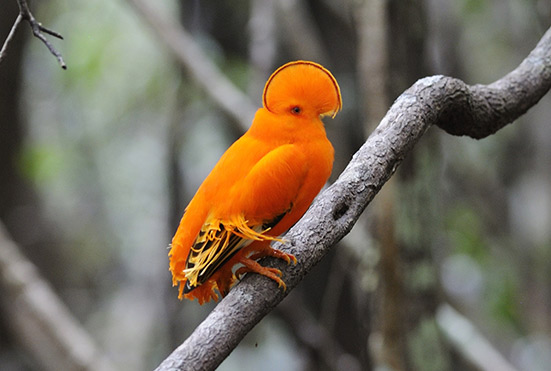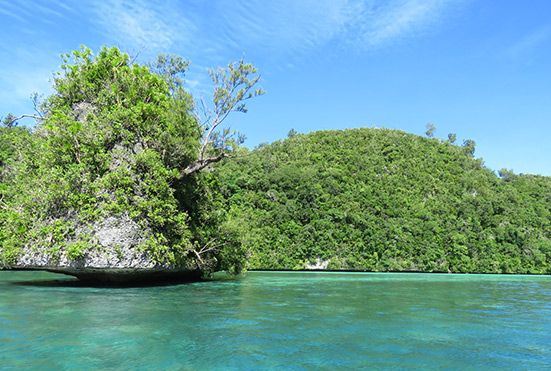
Greetings from Team Rockjumper!
After a busy couple of months, summer now warms North America and Europe, as winter sets in at Rockjumper House in South Africa and our Mauritius office. So it’s time for an update on the latest Rockjumper birding adventures. We’ve been hot on the trail of numerous spectacular birds, in places as far-flung as Micronesia, Ecuador, Cameroon and, of course, our home country, South Africa. We continue to expand from strength to strength, and featured inside you will find the latest news: from new team member announcements, your always welcomed tour feedback to a sneak peek at the workings of Rockjumper’s Operations Chief, Clayton Burne. Our long-standing partnership with ZEISS never ceases to strengthen; and later on we highlight the impressive new equipment they have graciously provided our tour leaders with!
Lots of fresh and fascinating news in this issue, so please take a look and enjoy.
GENERAL TRAVEL INFO
2018 Tour Schedule & Rates
The ink is still drying on the brand new 2018 Rockjumper Tour Schedule & Rates. This catalog covers the wide selection of our ever-growing tour list and features a series of new and revised tours, including new Mega Tours to Peru and Vietnam. Providing you, once again, with the dates, the rates and more info on the tours we are offering in 2018/19! We are particularly proud of our selection this time around; and as always, you can click here if you’d like a digital copy, which you can download free of charge.
Private Tours
As always, the private tours department has been very actively planning and setting up adventures for scores of our guests. Our joint-venture tours with the American Birding Association (Tanzania departure in 2018) and Birdlife International (Rare Bird Club Antarctica Cruise) next season have made great progress. The ABA Tanzania safari in March/April 2018 has been receiving significant interest; and so should it, given that it visits some incredible sites, including Tarangire National Park, the majestic Serengeti and the Ngorongoro Crater. A good number of participants are also taking up our offers for pre and post tour extensions to see the highlights of Kenya, gorillas in Rwanda and Amboseli National Park, with its backdrop of Mount Kilimanjaro.
Loyalty Programs
Travel with Rockjumper and save!
Rockjumper has four Customer Loyalty Programs for our valued customers. Take a look and discover more with Rockjumper, while traveling for less. We help you get where you want to go, and see what you want to see.
With over 300 tours to 120 destinations, there is never a dull moment for Rockjumper Operations Manager Clayton Burne. Hear straight from him what’s in the works for 2018 and beyond.
An Interview with Clayton Burne – Rockjumper’s Operations Manager:
With the 2018 Tour Catalogue heading for print, we asked our Operations Manager, Clayton Burne, for some insight. Over the course of a lengthy interview, we wanted to get an insider’s guide to what is new, what is different and where to go in the forthcoming year.
Q: The production of the annual tour catalogue is now complete, always a very busy time of year for not only the Operations department, but the company as a whole. How do you feel about the end result?
CB: Indeed, and I can say with some satisfaction that our efforts over the last 7-8 months have produced another stunning tour catalogue, with over 300 scheduled tours alone. It is quite some undertaking to communicate with all our agents, lodges and all our guides in order to establish the ultimate itineraries, as well as calculate the tour dates and prices.
Q: The tour catalogue goes into good detail regarding all the new tours, but from your perspective as a birder, tour leader and operational organiser of the tours – which tour would you be heading on first if you could escape the office?
CB: A relatively easy one, Indonesia – West Papua. Having seen a fair amount of Papua New Guinea, I’d really like to see the other half of the island. More incredible birds-of-paradise, bowerbirds, jewel-babblers, parrots and pigeons, the Arfak, Snow and Cyclops Mountains all topped off with a short extension to Waigeo Island for the apex BOP – Wilson’s Bird-of-paradise. It won’t be the most luxurious tour by any stretch of the imagination, but certainly intrepid and exciting.
I certainly make honorable mention of the Brazil – North Eastern Mega Tour. Anyone who knows me knows that South America has always been my destination of choice, and yet I have hardly stepped foot in Brazil, surprisingly. So this particular tour is easily the most rewarding in terms of offering around 100 endemics in only 22 days – that is nearly half the endemics found in all of Brazil.
Q: You were very animated recently about publishing itineraries for the ‘final frontier’ in Latin America, could you elaborate?
CB: When I first joined Rockjumper, our coverage of South, Central and North America was rudimentary. We made a huge effort to increase and expand our expertise and reach in the region. After four years, we had tours running to every destination that mattered, barring Venezuela and Mexico. We put Venezuela back on the map last year, although it remains an unattractive destination due to internal problems. However, it was Mexico that provided us with the most headaches. I mean, how can we not have comprehensive tours to a country with 120+ endemics? It has taken at least 2 years of back and forth, over which sites we wanted to visit, how we were going to set up the itineraries and how long each tour was going to be, to reach consensus. I’ve certainly lost track of how many times we threw all the plans out of the window and started from scratch again. We knew that opening up a single destination with as many tours as we intended had to be very well planned, and I’m proud of the team that worked to make this happen. A total of 7 Mexican tours have been released for the 2018 season, with further tours of Baja and the North West due for release in 2019.
Q: Have we reached capacity when it comes to coverage of the world’s classic birding tours and destinations? If so, what does the future of new tours hold?
CB: I’d say that we have tours running to the vast majority of classic birding destinations. There are a few that remain off our radar at present due to internal conflict or political problems. So most of the new tours we are producing take in far-flung countries and islands, in search of species that have been seen by very few people. Aside from the West Papua tour, take Somaliland – Horn of Africa Endemics. The mere mention of Somalia has people retreating immediately, and yet Somaliland is actually an autonomous state led by a democratically elected government, without the internal conflict that afflicts Somalia itself. If you asked any of our African guides where they dreamed of going, this is the place.
Despite having many tours to India, there are still a few gaps that we want to fill. Our Western Tragopan Quest is specifically targeted to find one of the world’s rarest and most beautiful species. It is certainly a tough tour, with many days of high altitude hiking and camping through the magnificent Great Himalayan National Park.
Not every new tour or destination is for the hardcore twitcher, though. I am particularly taken with our Iran – Persian Birding Adventure. There are, of course, some great birds to be seen, but the opportunity to visit this horribly misunderstood country, home to one of the world’s oldest civilizations, is too good to miss.
Q: At some point in any birding conversation, the topic of numbers will come up. If one is setting out to drastically increase their life list, where should they be going?
CB: There is no place like South America to build a massive list, and there are numerous options to choose from. The tried and tested Colombia – 1,000 Birds Mega tour is the most obvious choice, and we have delivered 1,000+ species on this tour four times already. However, I’m very interested in seeing if we can breach the 1,000 mark on our brand new Peru – Mega 2018. After years of speculation and logistical planning, we certainly think such a number is possible.
While certainly not ‘new’ tours, we have made a number of strategic adjustments to our Ecuador tours, refining the sites we visit as well as improving the logistics. Many of the tours have been segmented into short, week-long journeys that can be taken on their own, or combined into much longer tours as required.
Q: Every international birder has to start somewhere. What tour or tours would you say should be first on the list?
CB: East Africa and specifically northern Tanzania and Kenya. To describe the combination of megafauna and birding as anything but spectacular would be an understatement. Ngorongoro Crater, the Serengeti, Amboseli, Lake Nakuru, Mount Kilimanjaro, Samburu – all the places you read about as a kid and watched on hundreds of documentaries. I had already visited half the globe before going to Kenya and Tanzania, and was quite simply blown away.
India, I’d say it is one of the must-visit countries, regardless of whether you are into wildlife or not. It is a sensory assault from the moment you arrive – incredible food, warm and welcoming people, staggering cultural and historical sites and, of course, numerous sought-after mammals and birds. For a first time visit, there can be no better tour than a visit to the North, which covers the spectacle of the Taj Mahal, the Himalayan foothills and gives one an excellent opportunity to see Tiger, the biggest cat on the planet as well as hundreds of species of resident and migratory birds.
A comprehensive tour of Madagascar would be next on my list of recommendations. A little more challenging than the two above-mentioned tours, but the ‘8th continent’ is known as the laboratory of evolution for a reason. Nearly everything on this island is unique, from the birds and mammals to the insects, reptiles, amphibians, trees and plants. Despite this incredible biodiversity, the country faces continued threats of habitat destruction – so definitely a destination that should be visited sooner rather than later.
Lastly, Antarctica – in some ways the ultimate destination of all, due in part to its sheer scale and scenic splendor. Up until fairly recently, Antarctica would have been far beyond most people’s capabilities and budgets. The advent of specialized cruise vessels has made the trip not only possible, but safe and comfortable too. The term ‘once in a lifetime’ is grossly misused these days, but I think it remains perfectly applicable to a trip to Antarctica. Aside from the scenic vistas, there is the attraction of the many specialized polar birds and mammals, as well as historical visits, including one to the likes of Sir Ernest Shackleton’s gravesite on South Georgia.
Q: You must have some exciting tours up your sleeve for 2019 and beyond, any hints?
CB: We are always working on a number of new tours and even now we have plans for some very interesting destinations. Given that we have all the world’s large landmasses covered, it is perhaps not a surprize that the focus now is on the remote islands of the world. With over 17,000 islands, it is not surprizing that Indonesia features heavily. Watch out for our Far East Cruise, which takes us across the Banda Sea, from Kai to Tanimbar Island, as well as the rarely visited Pulau Babar, Damar and Leti Island. We are also expanding our reach into the massive Pacific Ocean, with tours to Micronesia covering the likes of Palau, the Northern Mariana and Caroline Islands; while a birding cruise will take in the remote Pitcairn, Henderson and Tuamotu Islands of Polynesia. On dry land, we have a few new tours to Brazil, covering such locations as Minas Gerais and Espiritu Santo, as well as the Tocantins and Bananal Island. Mexico is due to have further tours added in the north-west of the country; while we are also looking at opening up some of the last remaining destinations in Africa.
That’s all from Clayton for now, but to find out more about our new, unusual or especially exciting offerings, you can contact us at: info@rockjumperbirding.com.
New staffers, and some new birds among our office twitchers highlight the team news in this round.
New Team Members

Calvin Harris
Born and raised on the East Coast of South Africa, Calvin developed a keen interest in birding, wildlife and travel at a young age. After spending time in America, working at a Summer Camp in North Carolina, he completed his Bachelor of Education and Diploma in Business Management. The attraction of Commerce steered him to pursue a career in Sales. Having spent most of his career expanding his diverse skill set, he looks forward to applying his knowledge and experience to the Rockjumper Group. Calvin’s favourite hobbies include keeping and growing his bird lists, photography and paddling down any of KwaZulu-Natal’s various river systems. Calvin is excited to be actively engaging with the Rockjumper family and is always looking to build new relationships with clients!

Nigel Redman (part-time leader)
Nigel Redman lives in Norfolk, UK, the best county for birds in Britain, and has been obsessed with birds for as long as he can remember. He had a successful career as a publisher of bird books, but an even longer one as a bird tour leader. Over the past three decades, he has led more than 120 bird tours, and has visited over 80 countries on all seven continents. In 1992, he led the first-ever birding tour to West Papua (formerly Irian Jaya), and in 2012, he took an intrepid birding group to northern Somalia. He has escorted several cruises to the Antarctic and Arctic, as well as guiding many tours to Asia and Africa, and now has field experience of more than half of the bird species of the world. He loves sharing his experience and knowledge with others and can’t wait to do the same with the Rockjumper family.

Stephan Lorentz (part-time leader; full-time from July 2018)
Stephan Lorenz was born in Germany, but moved to the United States at a young age and began birding in Texas, one of the most biologically rich areas of the US. He completed a Master of Science degree focusing on grassland birds. After looking into a career in outdoor education, he realized that he could combine his passion for birds and travel by joining various research projects. He spent several seasons as a field biologist, working for the Smithsonian Institute in Jamaica, Max Planck Institute in Australia and the US Fish and Wildlife Service in Alaska. In addition, he spent four years teaching biology at a community college, and then pursued guiding full-time, leading tours throughout North, Central and South America with forays into south-east Asia, South Africa, Australia and the South Pacific. Stephan also has a background as a biologist educator for the National Audubon Society.
Micronesia Recce
By Erik Forsyth
A recce to some of the remote and forgotten islands of Micronesia, an area that I was unfamiliar with, came as a pleasant surprise. An invitation from the Palau Tourism Authority to promote birdwatching to these islands was too good to turn down, and soon I was off. The islands of Palau can only be described as stunning, with turquoise blue, clear oceans and palm trees throughout – especially the Rock Islands, which are world-famous for scuba diving. I visited several islands and found numerous the endemic birds, such as Micronesian Megapode, White-throated Ground Dove, Palau Fruit Dove, Palau Fantail, Palau Flycatcher, the strange Morningbird and noisy flocks of Citrine and Dusky White-eyes, which were constantly racing through the trees. After a bit of a search, we located the strange Giant White-eye and Palau Cicadabird. White-tailed Tropicbirds, Common Noddy and White Terns were a constant sight overhead. A visit to a nature reserve in the north of the island gave us great looks at Micronesian Imperial Pigeon, Palau Kingfisher and flyover Nicobar Pigeons. Walking the trails, I came across several Japanese cannons and guns, a reminder of the fierce battles for these islands at the end of WWII.
My visit to the laid-back island of Pohnpei, part of the Caroline Islands Group, was equally enjoyable. Visiting several forest patches, including Sohkes Rock and the Liduduhniap Falls, I managed to find all the endemic birds. Pohnpei Lorikeet, the National bird, as well as Caroline Islands Fruit Dove, Caroline Islands Swiftlet, Micronesian Starling and Micronesian Myzomela were pleasingly common and seen throughout. With a bit of searching, Pohnpei Kingfisher, Pohnpei Fantail, Caroline Islands Reed Warbler, Pohnpei Flycatcher, Micronesian Imperial Pigeon and the smart Hunstein’s Munia were located. By far the most tricky endemic, the Long-billed White-eye, was located on two days near the falls. A visit to the ancient ruins of Nan Madol is a must. Our proposed tour to this area will include the islands of Palau, Yap, Saipan, Chuuk and Pohnpei.
Tagalong Twitching – Malagasy Pond Heron in South Africa
By Shaun Auge
As a non-birder, working for a company that’s entire business revolves around birds and birding was steeped in irony. So, naturally, I embraced it with open arms.
When I started working for Rockjumper as their editor and marketing assistant, the only experience I had with birding was watching David Frankel’s ‘The Big Year’, and the distant memories of my father calling out bird names as we drove through Kruger National Park – which, as a five-year-old, I showed no interest in, as I was far too engrossed in trying to see a lion hunt or something equally as epic. So to say my experience with the activity was ‘lacking’ would be appropriate and perhaps even understated. However, as my time here has progressed and I have had the opportunity to read about all the adventures and stories of our tours, my interest has been piqued and my knowledge of world’s birds has grown exponentially.
When the opportunity arose for me to join in on a mega twitch, my curiosity took over and I accepted the offer immediately. A Malagasy Pond Heron had been seen in Phinda Game Reserve, near Hluhluwe, KwaZulu-Natal. Usually over-wintering much further north on the continent, in areas like Kenya, Tanzania and northern Mozambique, this was the first ever confirmed sighting of the bird in South Africa – easily over 1,000 kilometres south of where it usually occurs. The confirmation sparked chaos in the South African birding community, and birding fanatics were very quickly traveling from around the country to see it. Because of the fact that the bird was in a privately owned section of the reserve, access was limited to two game drives a day (one in the morning and the other in the afternoon) so getting an opportunity to see it required some quick phone dialling and a bit of luck. Thankfully, we had both, and soon the next available safari vehicle was booked, which was to head out the next morning.
To get where we needed to be on time, David Hoddinott, Andre Bernon and I left almost immediately after work, first picking up some essentials like jackets and binoculars and then driving several hours, well into the night, to reach our sleeping point in the town of Empangeni, where Andre’s parents reside. (Our co-workers and safari vehicle companions, Clayton Burne, Megan Taylor and their eight-year-old daughter, Kaily – our good-luck charm, decided leaving at midnight and driving through the night to reach the reserve gates on time was the better plan). We arrived, dropped our things off, and paid for the safari vehicle before taking a quick trip to extract as much information as possible from David and Andre’s friends who had seen the heron that afternoon. Once we knew what we needed, I was regaled with a myriad of twitching stories, since this was my first. Hearing the tales of what some people went through (or how much they paid) to see one bird blew me away, and I definitely didn’t comprehend, what seemed to me then, an incredibly unhealthy obsession (One story recalled a man who had ruined SEVERAL of his marriages throughout his twitching career). Stupefied by what I had heard, we retreated to our beds in preparation for an awakening at what was, especially to someone who was still a student only last year, a completely ungodly hour! (I lay a while, trying to determine if what I felt for the people in the night’s stories was some twisted form of respect or just disdain for their level of passion – I’m still not sure).
We woke up on time the next morning (surprisingly for me), and, fuelled by a strong cup of coffee, drove the last hour and a bit to get to the reserve well before sunlight. Just as the sun reared its head over the distant horizon, we embarked on our journey to the lake where the heron had been seen. We started off by exploring the northern side of the lake (this was where the bird was seen the previous afternoon), and where our driver, Brendan, would stop the vehicle regularly to allow us to scan the reeds and water’s edge in search of our elusive target. Eventually, we reached a point on the edge of the lake where we couldn’t continue further, and we still hadn’t seen the bird. With confidence beginning to dwindle, we all made an effort to stay positive and elected to try our luck at the southern end of the lake.
As soon as we reached the southern edge, we began scanning once again, applying the same tactic as before. Once again, our efforts were for nought. Feeling significantly less confident now, we decided to head back, recharge with some coffee, and tackle the northern side of the lake one more time, where hopefully the heron would come out to bask in the warmth of the sunlight. As we headed back, now slightly despondent, David and Andre took to mentoring me on some of the birds we had seen in the area, from Kittlitz’s Plovers, Black-winged Stilts and Striated Herons to lovely Malachite Kingfishers; it was great to experience some of the birds I had only previously seen in pictures.
Suddenly, in the middle of my field crash-course, David spotted a heron about 80 meters away, on the water’s edge across from where we were driving. Instructing Brendan to stop the vehicle, he set his binoculars on the mystery bird and within a second called out: “That’s it!” in a child-like daze of excitement. The rest of the car quietly erupted into feelings of elation as we all got our own binoculars and cameras onto the incredibly camouflaged bird. Happy that we had all seen it and taken photos as proof, we took a moment to send high-fives all around before refocussing our attention to enjoying the bird. It stood motionless for quite some time, emulating a Shoebill as it waited for unfortunate prey to come past. Some did, and we got to watch this special bird feed!
After enjoying extended periods of time with this bird, and spotting the a group rare Lemon-breasted Canaries in the interim, we decided it was time to head back. As we started off, the bird took flight, revealing incredible amounts of white. Cameras went into rapid fire before it landed only 20 meters from its original position, now in a much more open bit of land. Photography continued, and soon, so did we, when it took flight again, landing on a lone stump over the water this time, providing even better views before flying again, the white still just as striking to me as the first time.
Happy with our time with the bird, and not wanting to disturb its peace, we headed off to enjoy a much-needed and much-deserved cup of coffee and some cookies. The good mood of the group was palpable, it was great to enjoy such a rare occurrence in person and I’m happy that my first birding and twitching experience was such a success. (I think mainly, though, I’m just happy that I avoided a long and very awkward 5-hour trip home with some very upset birders!)
UPCOMING TOURS
Last Call! The following highly desirable and guaranteed tours are set to go, with only a few spaces remaining. If you are looking for a fantastic tour to do soon, this is the place to start.
MADAGASCAR – COMPREHENSIVE IV 2017
Tour Dates: 9 – 29 Nov 2017 (21 days)
Tour Price: USD7,750 *GBP5,937 *EUR6,764
Leader: Adam Walleyn
Spaces Until Viable: 1
Our three-week, comprehensive tour of Madagascar is set to take in as much of this otherworldly land as possible. Our time here will cover a litany of habitats, including the deciduous woodlands of the north-west, the eastern rainforest zone, the astonishing Spiny Desert around Ifaty and the specialized coral rag scrub of the south-west.
Thanks to its millions of years of isolation, Madagascar has developed a biological diversity that is nothing short of spectacular. Nowhere is this uniqueness better reflected than in its birds, and the island plays host to no less than five endemic families (ground rollers, Cuckoo Roller, mesites, Malagasy warblers and vangas). We will spend time in search of the birds that make up these lovely endemic families, along with a host of other specials, including Blue Coua, Benson’s Rock Thrush, Appert’s Tetraka and Madagascar Plover. Thankfully, the wonder of Madagascar’s diversity also extends well beyond its bird life, and we will also have the chance to encounter up to 27 lemur species (including the regal Indri and world-famous dancing Sifakas), dozens of chameleons, cryptic leaf-tailed geckos and even some of the world’s most outlandish insects, such as the celebrated Giraffe-necked Weevil!
THAILAND – NORTHERN & CENTRAL: ASIAN BIRDING AT ITS BEST II 2017
Tour Dates: 15 Nov – 2 Dec 2017 (18 days)
Tour Price: USD5,450 *GBP4,163 *EUR4,728
Leader: Nigel Redman
Confirmed – 5 Spaces Available
Our time in Northern and Central Thailand will see us exploring a range of habitats, including lowland and montane rainforest, mangroves, wetlands and coastal mudflats, as we begin building a very impressive bird list – which could certainly number over 400 species by the end of our time here.
Some of the key locations we cover here include the forested hillsides of Khao Yai National Park, the mudflats near Samuth Sakhon (where we may find the endangered and highly sought-after Spoon-billed Sandpiper), Kaeng Krachan, the mountain forests of Doi Inthanon and the mountains of Doi Angkhang. This Thailand birding tour is designed to take advantage of the incredible influx of migrants from the north, and an amazing compilation of resident Asian bird species. We will target a host of localized and range-restricted species, which might include such gems as Siamese Fireback, Great Hornbill, Banded Kingfisher, Long-tailed and the huge Dusky Broadbill, the spectacular Coral-billed Ground Cuckoo, Blue and Eared Pitta, White-rumped Falcon, the stunning Black-headed and Great Slaty Woodpecker, Ratchet-tailed Treepie, Grey Peacock-Pheasant, Green Cochoa, Black-throated and Spot-breasted Parrotbill, Red-faced Liocichla, Giant Nuthatch and unbelievable Green Peafowl.
CHILE – BIRDS, WILDLIFE & ANDEAN LANDSCAPES 2017
Tour Dates: 1 – 13 Dec 2017 (13 days)
Tour Price: USD5,700 *GBP4,360 *EUR4,971
Leader: Dušan Brinkhuizen
Spaces Until Viable: 1
Occupying a long, narrow ribbon of land between the Andes Mountains to the east and the Pacific Ocean to the west, the fabulous nation of Chile remains one of the South America’s most stable and prosperous. Our time here is, therefore, a truly enjoyable experience, as we get to revel in excellent accommodations, delicious food, lovely wine and splendid Chilean hospitality throughout.
As we take in the outstanding scenery of high-altitude lakes, snow-capped volcanoes, excellent coastal desert and rich Patagonian forest, we will spend our time in search of the best Chile has to offer in avifauna. Special species possible during our time here range from Slender-billed Parakeet and Chilean Woodstar to the sought-after Diademed Plover and unique Chilean tapaculos called ‘huet-huets’ and ‘turcas’. One could certainly expect to see well over 200 bird species during our relaxed 13 days here, as well as some truly special mammals, including Southern Mountain Viscacha, Vicuna and even Andean Cat.
Past visitors to this incredible nation will no doubt agree that Chile truly is one of South America’s most spectacular and memorable destinations!
INDIA – NORTHERN: BIRDS & TIGERS II 2017
Tour Dates: 4 – 21 Dec 2017 (18 days)
Tour Price: USD5,600 *GBP4,278 *EUR4,858
Leader: Rich Lindie
Spaces Until Viable: 1
We begin our tour of northern India with, undoubtedly, one of the greatest wildlife experiences of the planet, as we search for the mythical Bengal Tiger inside Ranthambore NP. The excitement, however, does not stop there, and our time in the park will certainly yield some incredible birding. Specials here could include the resplendent Indian Peafowl, the uncommon White-naped Woodpecker, the sweet-singing Tickell’s Blue Flycatcher and the endemic Painted Sandgrouse. Our next destination is the world-famous waterbird sanctuary Bharatpur, where we will enjoy rickshaw rides around the wetlands that teem with waterfowl, pelicans, herons, storks, raptors, waders and migrant passerines.
The rest of our time in this fabulous region will include marveling at intricacy and elegance of the Taj Mahal, an exploration of the Chambal River – one of the last strongholds for the strange Gangetic Dolphin and Indian Skimmer, time spent in the Himalayan Foothills at Corbett Tiger Reserve and in the Himalayas itself at the Hill Station of Nainita. All before we return to Dehli, where we will finish off with forays to the surroundings of Okhla Island and Yamuna River.
This is a tour to be enjoyed by birders and non-birders alike, thanks to its multi-faceted birding, wildlife and cultural focus.
CUBA – CARIBBEAN ENDEMIC BIRDING VI 2017
Tour Dates: 11 – 20 Dec 2017 (10 days)
Tour Price: USD3,150 *GBP2,409 *EUR2,749
Leader: Chris Sharpe
Confirmed – 3 Spaces Available
Our time in Cuba will see us covering the wide variety of habitats on offer here, ranging from interior tropical forests and mangroves to extensive wetlands and the white sand beaches along the northern coral cays. As we explore, we will be targeting almost all 28 Cuban endemic birds and a further 23 Caribbean specials, as well as some great wintering North American migrants.
Using the services of local bird specialists at each site, we guarantee an impressive success rate in observing the island’s amazing avian diversity (to which our participants earlier this year can attest). From the world’s tiniest bird (the Bee Hummingbird) to such sought-after species as Giant Kingbird, the cute Cuban Tody, the beautiful Cuban Trogon, Gundlach’s Hawk, Oriente and Yellow-headed Warbler, Zapata Wren and no less than four species of stunning quail-doves (including the fabulous Blue-headed, Key West and Grey-fronted), Cuba really is an absolute pleasure to bird. The incredible birding here is only aggrandized by the ease of travel, comfortable accommodations, fascinating culture and the friendly people. Our tours here are nothing short of remarkable!
Our great guides go tour by tour, profiling some of the crazy highlights of the last few months.
David Erterius – Satyr Tragopan
A stretch of a few kilometers along the narrow and windy road near the small town of Sengor in the highlands of central Bhutan is generally considered the best and most accessible area in the world to see Satyr Tragopan. We were spending the afternoon slowly cruising along the road when, all of a sudden, a gorgeous, bright red male Tragopan appeared a little further ahead of us – seeing him standing in the mist was a sight to behold. We approached him by vehicle and spent the next few minutes dazzled by his sheer beauty. What we then saw was truly spectacular and something many people would say equals seeing displaying Birds-of-Paradise but far more seldomly encountered. The vibrant blue skin on the face of the bird transformed into very bright silvery-blue ‘flashes’ – these were the gular wattles expanding out underneath its head. At the same time, his fleshy blue horns inflated. Next, we saw a female tragopan approach the male, hence his excitement. At that point, the male started to rapidly bob his head and flap his wings in a low position, reminiscent of a dustbathing bird! The whole show probably didn’t last more than 5 minutes, but such a spectacular sight will certainly stay etched in our memories.
Rich Lindie – Pere David’s Owl:
It would be far easier to choose my top sightings if I only had to focus on the rarest or most spectacular birds I see. Unfortunately, the overall experience of each sighting is really what makes certain birds stand out for me, making the decision somewhat more complicated. That said, I’m all about combinations, and my experience with my first Pere David’s Owl ticks all three boxes, among others. To cut a long story short: during our China – Yunnan and Sichuan tour, after a very early morning wake-up for our only realistic chance to see the owl, a forced change in vehicles, a landslide, some extraordinarily slow taxi-driving, a post-sunrise arrival, sub-zero temperatures, mist, and a lack of decent coffee, we ended up watching one of these seriously impressive and seldom-seen birds (calling!) for over an hour, until we decided to leave! Nothing like a 13th–hour pull-back when you’re certain all hope is lost!
David Hoddinott – Striped Crake:
My top bird since April has to be the amazingly co-operative Striped Crake that appeared in Hluhluwe Game Reserve in KwaZulu-Natal, South Africa recently. This is a rarely recorded species in South Africa and particularly in our province, with only a handful of previous records. This was the first twitchable one in the province and a species I never imagined that I would see in KZN. By pure coincidence, I happened to be just a short drive away from where the crake was spotted. We left early the next morning in order to be at the gate as the park opened at six. After entering the park, it took us a good 45 minutes to get to the hide where the crake had been spotted. On arrival, we gave a thorough scan of the waterhole with no luck. However, after about 15 tense minutes, the crake appeared on some tall grass right in front of the hide, where it first sunned itself and then walked around the wetland in search of food. We were absolutely delighted to see this bird so well and were able to watch and photograph it for an hour, what an amazing experience!
Wayne Jones – Green-breasted Pitta:
I was recently fortunate enough to lead our Highlights of Africa tour, which spans Tanzania, Uganda and Zambia, with an extension to South Africa. As you can imagine, the quality of birds spread across these countries is amazing, so selecting just one would be a difficult choice. However, two species immediately sprang to mind, both seen in bird-rich Uganda. The monotypic Shoebill was a delight to see, and an obvious contender, but my choice is the Green-breasted Pitta. Only two pitta species occur in Africa, and this is the scarcer of the two. We woke early and hiked through Kibale Forest in the dark to reach the spot where the bird had recently been seen. As the forest slowly grew lighter, we saw the pitta ahead of us, quietly hopping about in the leaf litter covering the path. After a few minutes, we realized there was a second bird! We watched the stunning twosome for about ten minutes and I even managed a record shot with my pocket camera. This blurry pic will always invoke memories of creeping about in the dark forest to find this beauty.
Glen Valentine – Mountain Peacock-Pheasant:
My recent trips to China – Yunnan and Sichuan and Peninsula Malaysia and Borneo turned up so many rare and special species that it really is extremely difficult to pick just one. However, because I am crazy about pheasants, my top bird of the past few months has to go to the pair of Mountain Peacock-Pheasants that were seen on my recent comprehensive tour of the Malay Peninsula. The Mountain Peacock-Pheasant is endemic to the Malaysian Peninsula and has always been a near-mythical and almost impossible species to find. It had been seen by very few birders until recently, when a pair began visiting a feeding station set up in the hill forest that cloaks the Genting Mountains that lie just above Kuala Lumpur. My group and I were fortunate to visit this site on a recent tour of the area, and after a patient wait at the make-shift hide and feeding station which has been set up for birders and photographers, we were rewarded with a very intimate encounter with a pair of these magnificent pheasants. Just superb and quite incredible indeed that this mega rarity has now firmly placed itself on the gettable species list!
George Armistead – Crested & Harpy Eagles:
Enigmatic, remote and rich with wildlife, the Darién Gap of Panama has long intrigued birders as a tantalizing, impenetrable wilderness. On our March tour, raptors were a major feature, and several days saw us gawking at huge concentrations of thousands of Swainson’s and Broad-winged Hawks. It was humbling to see these most migratory of New World hawks in such staggering numbers, winging their way north to the U.S. and Canada, where they’ll have but a few short months to complete breeding. And how about those Mississippi Kites?! On our final morning, at breakfast, we looked up to see hundreds, just risen from their evening roost, climbing up into the morning sky. In all, we encountered about two dozen species of raptors during our week. But it was the big, the beautiful, and the rare that took center stage. Panama’s National Bird, arguably the largest eagle on earth, and the most powerful raptor in the Americas, the Harpy Eagle had been pretty reliable in the national park this year. I’m not sure any of us dared to admit it aloud, but this was surely the major target bird for all of us. And not only did we succeed with this exceptional eagle, seeing a near-fledged juvenile screeching and jostling about its natal area, but chance smiled upon us with another superb raptor as well. Just a few weeks prior to our visit, a Crested Eagle nest was located nearby. If Harpy is the most majestic raptor, the Crested is among the rarest and hardest to see. Few nests have ever been observed by birders, and not only did we commune with a gorgeous, regal adult female Crested at the nest, but we were also able to detect a newborn chick! A thrill none of us shall forget.
Heinz Ortmann – Heuglin’s Bustard
It was on my most recent Kenya & Tanzania – Birds & Big Game tour that we came across arguably one of the most unexpected sightings I have had in a long time! We were out on a morning drive in Shaba National Reserve in Kenya, passing through some of the unique lava-field woodland areas, when one of the tour participants shouted: “Bustard!” Initially, my assumption was that it would be a Kori Bustard; but as soon as I had my binoculars on the bird, it was evident that what we had found was a rather impressive male Heuglin’s Bustard! This is a highly sought-after species that is very rarely seen anywhere. In fact, it was a new bird for me – I had thought it may only be possible in certain parts of Ethiopia, but there we were, enjoying lengthy views of this stunning bird as it strode off and away from view into some denser woodland! Up until that point, we had already been having a fantastic trip and a bonus sighting such as this one was a fantastic surprize and thoroughly enjoyed by all who were there!
Andre Bernon – Caspian Plover
Not much is known about this Charadrius in terms of the exact extent of its breeding grounds in the northern hemisphere. Migration from Central Asia to its wintering grounds in Africa rarely bring it further south than Zimbabwe, Botswana and Namibia. What makes it more special is the fact that it is an uncommon species and highly nomadic, too.
You can imagine the excitement we had when we spotted one in the middle of the austral summer – in Botswana! A single bird was found on the edge of a small watering hole in full breeding plumage! Its brightly colored chest stood out like a sore thumb amongst the many Double-banded and Burchell’s Sandgrouse.
Our Rockjumper Wildlife Tour of Botswana focuses mainly on mammals, but as every nature enthusiast knows, it’s not that easy. All aspects of the natural world work in unison and one has to enjoy all facets. In the African bush, spurfowls and cisticolas usually give away the presence of a mammalian predator such as Serval, Wild Cat, Mongoose and even Leopard. In saying this, the Caspian Plover we found made for one of our highlights of this wildlife tour. Even amongst other critters such as Lion, Leopard, Aardwolf, Wild Cat, Honey Badger, Spotted Hyaena, Bat-eared Fox, Spotted-necked Otter and lots of African Elephant.
Forrest Rowland – White-tailed Eagle
The Pribilof Islands, in the middle of the Bering Sea, offer an endless array of amazing wildlife possibilities. With high rock cliffs covered in Cormorants, Fulmar, Auklets, and Puffins, to tundra-covered volcanic hills and peaks hosting Reindeer, Arctic Foxes, and more Lapland Longspurs than one can count, there is never a dull moment on St Paul Island. This year’s visit proved to be even more eventful than some. A few of the first birds we saw upon our arrival included Hawfinch, Olive-backed Pipit, and the Western Hemisphere’s 8th Marsh Sandpiper!
But, perhaps, the most exciting sighting of our time there was on the final afternoon, while we were leisurely staking out an Arctic Fox Den. Foxes are common on the island, and rather numerous. However, fox pups are about the most adorable little animals one can hope to see in this harsh environment, and are always worth spending some time enjoying. It was during this stakeout, as we were all laid out on the accommodating tundra grass and moss, that I noticed a dark shape come up on the horizon, shaky in the mid-afternoon heat shimmer of the unusually warm and sunny day we were enjoying. It was clearly a very large raptor. Any raptor on the island would be considered odd, most are given full vagrant status. And for the past few years, the most likely raptor of any type on the island would be the 4th White-tailed Eagle to visit the Western Hemisphere from Siberia. As a young bird a few years prior, this individual wandered to the Pribilofs to reap the benefits of being the Pribilof Islands’ sole raptor, and stuck around. The bird, however, is very seldom seen. Covering the huge distances between islands to forage, and preferring to steer clear of humans, very few groups have encountered this prize bird over the past months. Therefore, I was elated to shout out: “Everybody up! It’s the White-tailed Eagle!!!” We all enjoyed great views of this impressive specimen, and even chased it a bit around the island for hopes of close photos. We happily settled for great looks of this incredibly rare vagrant to North America.
Adam Riley – Great Grey Owl
When paging through a fieldguide or chatting with other birders, one always builds up a sense of anticipation for the moment you finally focus your binoculars on that elusive new bird. One of the birds on my most wanted list was the Great Grey Owl. I have always been impressed by this massive owl, and even featured it on the front cover of Rockjumper’s 2012 tour catalogue. This made my longing to finally see this bird for myself even more intense! Also known as the Phantom of the North, this truly impressive apex predator of the boreal forests had, however, eluded me for decades, on both sides of the Atlantic. It was certainly not without trepidation that on one fine May morning in Belarus we set off with a local guide to seek my nemesis. And finally, there it was, a splendid female Great Grey Owl, her intense golden eyes, set deep into her impressive facial disc, glaring at me. It’s tough to describe my emotions when I finally had a Great Grey Owl in my sights, but my index finger didn’t let me down and this is one of the hundreds of photos taken to record this momentous event for posterity.
Panama, Cameroon, Bhutan and Ecuador feature among the recent tour triumphs.
Ecuador – Northern
By Dušan Brinkhuizen
Our recent Northern Ecuador tour was a blast! We re-designed our tours to this mega-diverse country by offering shorter trips to each EBA (endemic bird area). These compact tours are offered back-to-back so we maintain our classic (mega) itinerary for those who would prefer a longer adventure in this magnificent country.
We started with the Chocó Cloud Forest tour, visiting birding reserves from the Andean treeline (3,600m) all the way down to the Pacific lowlands (500m). We targeted as many Chocó endemics as possible, and highlights included Plate-billed Mountain-toucan, Chocó Trogon, Toucan Barbet, Andean Cock-of-the-rock, Orange-breasted Fruiteater, Club-winged Manakin, Rose-faced Parrot, Black Solitaire, Glistening-green Tanager, Double-toothed Kite, Indigo Flowerpiercer, Ocellated Tapaculo, Oilbird, Orange-fronted Barbet, Velvet-purple Coronet and Moss-backed Tanager!
We then continued to the Eastern Andes, which started off with a real bang. One of our first stops was truly epic: a perched Giant Hummingbird was spotted as soon as we got out of the vehicle, followed by an adult Andean Condor in flight. On top of this, two Spectacled Bears were scoped on the opposite side of the valley – all happening within a 10-minute timeframe! The Spectacled Bear was an extremely rare sighting and it took a little while before we recovered from all the excitement. We then continued down the mighty east-slope, picking up specialties at different elevations and habitats, with highlights including Torrent Duck, Silvery Grebe, Ecuadorian Hillstar, Scarlet-bellied Mountain Tanager, “San Isidro” Black-banded Owl, Inca Jay, White-bellied Antpitta, Powerful Woodpecker, White-capped Dipper and an incredible Black-and-chestnut Eagle.
The Amazon block of the tour did not run this year, so we adjusted the itinerary slightly to do a final “mega” day and bird the lower elevations along the east slope and down to Archidona. It was a mega-diverse day, from upper subtropical cloud forest (2,300m) to lower foothill Amazonia (800m). We kicked off with great flight views of Barred Parakeet and a little later we had three Black-billed Mountain Toucans in full view! At Sumaco National Park, we enjoyed a “monster” mixed-species flock (30+ species!). We had continuous bird activity, adding many new species to the list in record time. The specials included real crackers like Blue-browed, Rufous-crested, Saffron-crowned and Flame-faced Tanager, along with Golden-eyed Flowerpiercer, Black-billed Peppershrike, Bronze-green Euphonia, Golden-faced Tyrannulet, Three-striped Warbler, Smoke-colored Pewee, Golden-crowned Flycatcher, Streak-necked Flycatcher, and Blackburnian and Canada Warbler!
A trail into some plantations proved to be productive, with Yellow-tufted Woodpecker, a crisp male breeding plumage Blackpoll Warbler, Turquoise and Silver-beaked Tanager, Black-banded Woodcreeper, Black Caracara and the rare (but overlooked) Red-billed Tyrannulet. In the understory, we got Golden-winged Tody-Flycatcher, White-browed Antbird and Rusty-fronted Tody-flycatcher.
Later we travelled to the Loreto Road, where we added Cliff Flycatcher, Blackish Nightjar, Lafresnaye’s Piculet, the amazing Paradise Tanager, Lined Antshrike, Rufous-tailed Tyrant, White-winged Becard, Black-capped Donacobius and Spotted Tanager. A late afternoon visit to Narupa Reserve yielded an astonishing number of new hummers, including Wire-crested Thorntail, Blue-fronted Lancebill, Gould’s Jewelfront, Golden-tailed Sapphire, Many-spotted Hummingbird, Violet-fronted Brilliant and the tiny Gorgeted Woodstar – what a trip!
Bhutan – Birding the Buddhist Kingdom
By David Erterius
Our recent trips to Bhutan were both truly extraordinary, packed with avian gems in a country that still supports large tracts of undisturbed and pristine forest-clad mountain slopes in the mighty and awe-inspiring Himalayas. Fabulous Hemlock-forests with spectacular blazes of flowering Rhododendron, interspersed with crystal clear mountain streams and beautiful valleys were magnificent. Dzongs (temple-fortresses) and ancient forms of cultivation were also particularly memorable sightings.
The outstanding highlights on both trips were watching a displaying male Satyr Tragopan for 5 minutes at close quarters, and an unexpected find and subsequent lengthy scope views of the critically endangered White-bellied Heron.
Worthy of mention are also our views of legendary species like the vibrant Himalayan Monal, unique Ibisbill, sought-after Ward’s Trogon, Rufous-necked Hornbill, Yellow-rumped Honeyguide, rare Black-headed Shrike-Babbler, Fire-capped Tit, outrageous Sultan Tit, bizarre Slender-billed Scimitar Babbler, tricky Sikkim Wedge-billed Babbler, cracking Himalayan Cutia, stunning Fire-tailed Myzornis, Beautiful Nuthatch, Wallcreeper, Mrs Gould’s Sunbird and Golden-naped Finch, among others.
Other species like Blood Pheasant (including 100 birds seen in one day!), Kalij Pheasant, Black-tailed Crake, Pallas’s Gull, Snow Pigeon, 15 species of cuckoo, White-throated Needletail, Red-headed Trogon, 6 species of barbet, 15 species of woodpecker, Long-tailed Broadbill, 5 species of wren-babbler, Spotted Elachura, Coral-billed Scimitar Babbler, White-hooded Babbler, 14 species of laughingthrush (including the difficult Scaly and Blue-winged), Red-faced Liocichla, Golden-breasted Fulvetta, 5 species of parrotbill, Spot-winged Starling, Rufous-breasted and Golden Bush Robin, 4 species of forktail, 15 species of flycatcher, Brown Dipper, Fire-tailed Sunbird, Altai and Maroon-backed Accentor, all 6 possible species of rosefinch, Scarlet Finch, vagrant Mandarin Duck and Lammergeier were all thoroughly enjoyed.
Mammalian highlights on both trips included Nepal Grey Langur, Gee’s Golden Langur, Hodgson’s Giant Flying Squirrel, Common Otter, Yellow-throated Marten and Himalayan Goral.
Panama – Best of Birding 2017
By Forrest Rowland
This year’s suite of tours to Costa Rica’s lesser-known neighbor, Panama, proved once again that not all the best birding destinations get the press and praise they deserve. This tiny gem of a country yielded over 550 species in less than 3 weeks, which included some of the planet’s most iconic and recognizable birds. Many of these are among traveling birders’ top 5 most wanted in the New World.
The tours began in the Darien, where we managed to see nearly 250 species in 5 days, based at the same wonderful lodgings of Canopy Camp. This luxury camping (“glamping” hardly cuts it) experience in the heart of the Darien forests offers good food, comfortable private lodging, and truly fantastic birding. White-headed Wren, King Vulture, White Hawk, Black Hawk-Eagle, Rufous-crested Coquette, Golden-collared and Red-headed Manakins, Cinnamon Woodpecker, Barred Puffbird, and White-bellied Antbird were a few of the spectacular finds right on the lodge grounds! Sallying out in the surrounding forests, we enjoyed great views of Great Green Macaw, Blue Cotinga, Black-and-white Hawk-Eagle, Double-banded Graytail, bizarre Bare-crowned Antbird, endemic Dusky-backed Jacamar, and the two most wanted raptors in the Western Hemisphere: Crested and Harpy Eagles, among many others. One of the unexpected delights was sitting back in the canoes as we cruised back towards civilization after successfully viewing Harpy Eagle, and gazing up at thousands of migrating Swainson’s and Broad-winged Hawks, and Turkey Vultures, on their return journey north. Nothing is as humbling as witnessing the spectacle of mass migration. From here we moved into the canal zone and nearby Valle de Anton to add Panamanian endemics like Stripe-cheeked Woodpecker, Violet-capped Hummingbird, Panamanian Tyrannulet, and be blown away by unparalleled views of Sapayoa and the stunning Black-crowned Gnatpitta.
By the time we arrived in the highlands, our sloth count was over 15 individuals, and our bird list exceeded 450 species. A short week in the Chiriquí Highlands, enjoying beautiful scenery and more-than-pleasant highland temperatures, added the likes of Three-wattled Bellbird, Chiriquí Yellowthroat, Sulphur-winged Parakeet, Costa Rican Brushfinch, Fiery-billed Aracari, Long-tailed Silky-flycatcher, and the most obliging Wrenthrush I’ve ever encountered. The unassuming, but undeniably attractive Wrenthrush is normally a skulking species which seldom shows well. A male decided to pop up not 20 feet from us, and sing in full view! We approached, and some participants even took videos with their iPhones from a mere 15 feet, capturing the dazzling song of this scarce bird. Any visit to Central American highlands holds the expectation of Resplendent Quetzals. We encountered 6 individuals, including a pair attending a nest. Mission complete. I am thoroughly looking forward to next year!
Cameroon – Rainforest & Rockfowl 2017
By David Hoddinott
Our time in Cameroon this year was highly successful. In just over 3 weeks, we managed to see over 520 bird species and an array of lovely animals, including Giraffe, Hippopotamus, and Caracal. Some of our biggest highlights during our time in this wonderful country included Grey-necked Rockfowl, Bannerman’s Turaco, Congo Serpent Eagle, Mount Cameroon Speirops and Fiery-breasted Bushshrike. Some honorable mentions include Long-tailed Hawk, White-crested Hornbill, Egyptian Plover, Standard-winged Nightjar and White-throated Mountain Babbler.
We kicked off our epic Cameroon adventure with an extension to the arid, dry and hot north of the country, covering the birding hotspots of the Guinea Savanna and Sahelian zone. Our time at Ngaoundaba Ranch was most memorable as we notched up a huge list of birds and enjoyed some wonderful sightings, including the northern race of Spur-winged Goose, a splendid African Rail, dainty White-spotted Flufftail, raucous Ross’s Turaco and the highly elusive Spotted Thrush Babbler. Our time in Benoue was spent exploring the gallery forest along the mostly dry Benoue River and the extensive Guinea savanna. Some of our interesting sightings included White-throated Francolin, superb Beaudouin’s Snake-Eagle and coveys of Stone Partridge. The rest of our extension included fabulous sightings of Dybowski’s Twinspot, several Northern Carmine Bee-eaters, a lovely male Long-tailed Nightjar and several lovely Scissor-tailed Kites.
Our main tour started off with a visit to Mount Cameroon, where we landed specials like the beautiful Yellow-breasted Boubou, secretive Evergreen Forest Warbler and beautiful and rarely-seen Grey-chested Babbler. At Limbe Botanical Gardens, we notched up key species in the form of Rufous-vented Paradise Flycatcher and the smart Western Bluebill. Time spent walking the main trail at Mount Kupe landed us a lovely adult Black Sparrowhawk, iridescent Black Bee-eater, sought-after Grey-headed Broadbill and fabulous Woodhouse’s Antpecker. After a long travel day to the Sanaga River, our time there managed to yield superb scope views of Chocolate-backed Kingfisher, a cracking Black Cuckoo of the gabonensis race and Yellow-browed Camaroptera. Our next destination was Campo Ma’an National Park; the main reason for coming to this area, of course, was to find the prehistoric looking Grey-necked Rockfowl. Our visit to the colony was most successful, as we all enjoyed good views of this fabulous species. Other notable sightings during our time in the area included two sightings of the seldom-seen Olive Ibis, Hairy-breasted Barbet and fantastic scope views of a Yellow-throated Cuckoo calling.
Our final birding session was at the Sanaga River, where we enjoyed splendid views of African Finfoot, Senegal Thick-knee, African Skimmer, Blue-throated Roller and a surprize in the form of Black Coucal. And so ended another fantastic and highly successful tour to this endemic hotspot!
We are so proud of our team at Rockjumper, so it’s wonderful to hear you enjoy birding with them too! Remember to check out all our guides and office staff profiles.
JR – Ecuador
Dušan Brinkhuizen is an excellent field ornithologist, with an encyclopaedic knowledge of bird song, taxonomy, and field identification marks. He is also excellent with the clients – friendly, courteous, patient, and anxious that everyone sees all the birds and enjoys the tour. It was a great tour! Thank you Rockjumper, one and all!
DH & JH – Ecuador
We were so fortunate to be able to experience the top-notch birding skills of Dušan Brinkhuizen. He is very professional but also so personable. Dušan made our trip so enjoyable, as well as providing a fantastic opportunity to learn more about and see the amazing birds of Ecuador. This was our second Rockjumper trip and we can’t wait for the next one! Everything was managed in a smooth and professional way, but with a human touch that is much appreciated. We always felt safe, cared for, and our guide was eager to know if we were seeing the birds and obviously happy that we were enjoying ourselves and the magnificent “parajos de Ecuador!”
EM – Kenya & Tanzania
This was an excellent trip! The combination of multitudes of fabulous birds and mammals, along with the scenery and natural/cultural history aspects of the trip made it the best I have taken, to date. Wayne Jones did a great job. I would definitely travel with him again.
BG – Kenya & Tanzania
Wayne Jones was excellent. His knowledge of birds, where to find them, identification – both by sight and sound – was superb. He was very personable with a good sense of humour. I especially appreciate his patience in helping us find some birds which were not particularly in plain view. All-in-all, a very good trip.
JB & CM – Spain
We had a wonderful tour in Spain. It was so nice that our guide, Rob Williams, could speak Spanish. We saw many more species and lifers than we expected to. We would love to do another trip with him.
RH – Peru
The tour met all of my expectations. Rob Williams is an excellent tour guide – knowledgeable, manages logistics well, interacts with participants in a fun and caring way, and strives to find the birds that are on participants’ “wish lists”.
AM – Bhutan
David Erterius is one of the best guides I have ever toured with. He was a wonderful spotter, calm, good-natured and was always willing to do his utmost to ensure everyone saw as many of the birds as possible. I cannot thank him enough for making this such a wonderful and memorable tour.
CL & RL – Bhutan
This was a fantastic trip. David Erterius did an excellent job as our guide. He was thoughtful, attentive, hard-working and an expert in the field. There wasn’t much that we didn’t find. We very much enjoyed his company and hope he leads us again in the future.
AG – Alaska
Forrest Rowland was a wonderful guide. He is extremely knowledgeable about birds and always takes the time to consider the wants, needs and priorities of the group. He works with his group to form a common goal. He was extremely professional and he had a remarkably positive attitude. His enthusiasm was infectious and admirable, as was his perseverance in finding us any species that we wanted and which was possible to see. Forrest is personable, humorous, and extremely generous and kind-hearted. I am so grateful to have met him.
RL – Kenya & Tanzania
Heinz Ortmann was charming and funny, outstanding on the birds and other animals, and excellent in dealing with the logistics. I would be very happy to travel with Heinz again.
We cherish creative and unusual opportunities in eco-travel, so in this edition of the newsletter, we are pleased to report on another unique event for conservation that Rockjumper was thrilled to be involved in.
Flock at Sea
By Andre Bernon
“Wow” is the word that comes to mind when one thinks back to the recent 5-day pelagic expedition we had off Cape Town, South Africa. Approximately 2,000 birders “flocked” to join this set cruise on board the MSC Sinfonia – planned and organized by BirdLife South Africa. The recent adventure took us south-east of Cape Town, to about 200 nautical miles offshore – just within the Exclusive Economic Zone (EEZ). The reason for this was to stay within South African waters, which enabled birders on board, mainly South Africans, to add species seen to their sub-region lists. The success of this trip was unimaginable! We managed to find absolute mega rarities within South African waters, let alone anywhere else in the world! Species such as Light-mantled, Sooty and Wandering Albatrosses and White-headed, Grey, Soft-plumaged and Blue Petrels are certainly worthy of a mention! The social aspect of the cruise was certainly another highlight as participants enjoyed the time spent with the like-minded people on board. The roaring success of this cruise has got everyone excited for the next one! Rockjumper and our sister company Oryx Photographic Expeditions donated the services of 14 birding and photographic tour leaders during the cruise who spent their time identifying birds and helping participants get onto or photograph them.
The back half of 2017 is chock-a-block with exciting birding events, and Rockjumper is ready to roll. See where we’ll be and come visit with us.
British Birdfair
August 18th – 20th, 2017 • Rutland, England
Birding’s biggest show is coming up shortly, and from August 18-20 thousands of birders from all over will gather in England at the Rutland Water Nature Reserve near Oakham. Hundreds of exhibitors will be present for the spectacle, and Adam Riley, Keith Valentine, Forrest Rowland, George Armistead, and Holly Faithfull will be among them, presenting talks and representing Rockjumper. If you’re going, be sure to stop by the Rockjumper booth and say hi.
American Birding Expo
September 29th – October 1st • Philadelphia, USA
On to The City of Brotherly Love! The American Birding Expo is truly a thrilling celebration of the birding lifestyle, located in Philadelphia, Pennsylvania this September 29 – October 1. Over 100 exhibitors will tend booths at the Greater Philadelphia Expo Center, including optics companies, travel companies, artists, photographers, and folks selling various other wares. The Oaks is the perfect site for this superb event, located just minutes from John. J. Audubon’s home at Mill Grove, and snugly nestled into the corner of south-east Pennsylvania, the birthplace of American Ornithology. Rockjumper is a sponsor, so come visit the booth to see what’s on offer. George Armistead and Adam Walleyn will be at the ready! And check out George’s complimentary Birders Guide to Philly here.
Again and again, Rockjumper is proud to show our committed support for the future of our favorite pastime.

New Zeiss Optics for Rockjumper Guides
Once again, Rockjumper Birding Tours has been kitted out with some of the latest ZEISS equipment: ZEISS Conquest Gavia 85 Scopes – the high-resolution lens system and 60x magnification capabilities mean no detail will go unnoticed, add to this its compact, low weight and robust design and you have the perfect travel companion; ZEISS Carbon Fibre Tripods – providing the utmost in stability and flexibility, this sturdy tripod can be combined with all ZEISS spotting scopes and most binoculars, while also offering particularly soft tilting and panning; and upgraded ZEISS VICTORY SF Binoculars – using a light-weight, ergonomic design and a dynamic fast-focus feature, these new binoculars offer brilliant optics and a larger, more encompassing field of view, allowing for hours of relaxed birding without fatigue!
Not only does this increase the enjoyment our guides have in their favorite activity, but it also provides our guests with tour leaders who have the finest current technology. We would like to thank ZEISS for their generous support and can testify that ZEISS are certainly setting a high standard for birding and wildlife observation.
With 125 years of development behind them, ZEISS has continued to combine cutting-edge technology with quality and precision to optimize birding, offering a brilliant visual experience. We have had a long and proud working relationship with ZEISS and are pleased to recommend them as the leading brand in optics.
BirdLife Competition Winner Awarded $1,000 Tour Voucher!
For the past couple of months, Rockjumper and BirdLife International teamed up to run a once-off competition, whereby the winner wins $1,000 off their next Rockjumper birding tour. To enter the prize drawing, participants were invited to sign up for a free e-copy of BirdLife – The Magazine.
We are pleased to announce that the winner of this competition is Paul Clapham!
In this issue, BirdLife focused on one of our favorite bird families – the ever-adorable penguins. Sadly, penguins are in grave danger and desperately need your help, which is why BirdLife have launched their Protect a Penguin campaign.
You can still sign up for a free digital edition of BirdLife – The Magazine here, using this special promotional code: VIPPKMA1V15H
Inside each issue, you’ll find inspiring articles from every corner of the world, spotlights on the stunning birds and habitats we just can’t afford to lose, news on the latest scientific breakthroughs, and challenging debates on Conservation’s hottest topics.
Join us in the Antarctic:
In February 2018, we will host an Antarctic adventure cruise in support of the BirdLife Protect a Penguin campaign, which will offer an amazing opportunity to visit several penguin breeding colonies. Along with our experienced Rockjumper guides, BirdLife experts will join us to monitor penguin nests, teach us more about penguins, and explain what can be done to help them.
For every adventurer who joins this once-in-a-lifetime tour, Rockjumper will make a donation to BirdLife to help save penguins!
Like you, we care deeply about the amazing and wild places we visit, and about keeping them pristine. We want the birds and wildlife that live there to flourish, and for future generations to be able to explore and enjoy the rich experiences and wonders of a healthy world, as we do now.
Sponsorship to Attend the International Hornbill Conference
Readers may remember Nomusa Mkhungo from our last newsletter, a young lady who works for an NGO called Women’s Leadership and Training Programme. Nomusa runs leadership workshops for young women in rural and township communities, and Rockjumper had the privilege of sponsoring her flights to attend the 7th International Hornbill of the World conference in Malaysia. The purpose of the conference was to discuss the present and future status of Hornbills, and Nomusa was invited to co-present a paper with Lucy Kemp, the director of the Mabula Ground Hornbill Project, on “The Value of Cultural Protection in Transformed Habitat for Conservation of Hornbills.”
Below is what Nomusa had to say about her experience (you can also download her full report here) :
“Dear members of [Rockjumper Birding Tours]
I am writing to express my deepest thanks for your recent donation for my trip to Kuching (Malaysia). I was thrilled to receive the donation from you. It has helped to develop my deeper understanding of being in a conference at the international level. Besides being at the conference, it has helped me to share my experience with other people from different countries. I learned from experts how they do their research. It has inspired me being around them.
The donation was not for my own benefit, but it will benefit a larger group. It has increased my passion for birds and I will continue to inspire other people to see the bigger picture of the importance of conserving birds.
I had the most wonderful experience I have ever had in my life. I got to learn about other peoples’ culture. My life will never be the same.
Thank you again for your support.
With Warm Regards
Nomusa Mkhungo”
PSO Youth Scholarship Program Sponsorship
Birders from all over the state of Pennsylvania will gather in Carlisle, from September 15 – 17 for some birding, and catching up with friends at the Pennsylvania Society of Ornithology’s Annual Meeting.
With field trips to spots like the Kittatinny ridges, Tuscarora State Forest, Miller’s Gap and Lamb’s Gap, Little Buffalo State Park, and even the historic battlefields at Gettysburg, the dates are great for fall migrants. Also, this is high season for Broad-winged Hawk migration, so we’ll hope for good conditions at the ever-popular Audubon Hawk Watch at Wagoner’s Gap. Talks will feature speakers who detail how to brush up on Fall Warbler Identification, the Use of Drones in Bird Research, and the Keynote Speaker is Ted Floyd – the Editor of “Birding”, the American Birding Association’s flagship publication.
Rockjumper is proud to support the event as a sponsor of PSO’s Youth Scholarship program, and George Armistead will be on hand to help celebrate with other PSO members.
Birding For All Sponsorship
Rockjumper is pleased to have recently made a donation of £500 to Birding For All, an organization seeking to improve access for people with disabilities and others to reserves, facilities and services used when birding. These improvements may be in the form of loop systems, tap rails, ramps, movable benches of different heights in hides, and viewing slots with downward opening covers at different heights, etc. Such facilities are still very few and far between, which is why ‘Birding For All’ will continue to try and make a difference.
It is their firm belief that if reserves are open to the public, then they must be open to all, regardless of anyone’s level of mobility. Half of Birding For All’s members have disabilities and half do not, a proud reminder that all are welcome and that it is only by an alliance of disabled and able-bodied people that change will happen. Please join us – Membership is FREE for all.
These improvements will result in better access for everyone, not just for those who need it, since nothing which enhances access for people with mobility issues in any way detracts from able-bodied provision. Of course, it goes without saying that Birding For All values the wildlife and habitats they desire access to, and would never compromise their conservation to create such facilities.
Birding For All are open to news, ideas or reports on reserves in your area and beyond. Assessing your local reserve while out birding is easy with the form they provide. All you need is a notebook, your camera/phone and a tape measure. For further information on joining or sending through news, ideas or reports on reserves, visit their website at www.birdingforall.com.
Impact Adventures: Rockjumper Tours for Biodiversity
Rockjumper is proud to support the work of the National Audubon Society, to inspire and promote sustainable economic growth in Neotropical hotspots with high biodiversity.
In many parts of the world, bird conservation is complicated by economic and societal pressures. Audubon faces this challenge head on. It integrates societal, economic, and biodiversity needs to stem the loss of bird species and other flora and fauna. Through Audubon, Rockjumper works with local and regional partners to help conserve key bird habitats in Latin America and the Caribbean through bird-based tourism.
Rockjumper’s Impact Adventures showcase amazing spectacles of nature; while celebrating the efforts and expertise of local businesses and conservationists.
Destinations include:
- The Bahamas (5-days, + 2-day Inagua option)
A 1-hour flight from Miami, white sand beaches, cobalt blue tropical waters and a suite of unique birds. - Belize: Crooked Tree & the Cockscomb Basin (7 Days)
Tiny Belize, the only English-speaking Central American nation, hosts Yucatan Peninsula endemic birds galore! - Guatemala (Tikal & Peten – 8 Days, Volcanoes & Lake Atitlan – 12 days)
Mayan ruins, spectacular volcanoes, Lake Atitlan, spectacular avian riches. - Colombia (Megadiverse Santa Martas – 7 days, Classic Cordilleras – 12 day, + shorter options too)
Most bird species of any country; trips to Bogota, the Andes, the Llanos, the spectacular Santa Martas, and more. - Paraguay (18 days, or opt for 12-day Highlights)
Little-known, seldom explored, offers a vast array of avian treasures in a startling constellation of habitats.
Support Audubon’s efforts and join one of Rockjumper’s Impact Adventures today!
ABA Young Birder Program Sponsorship
The American Birding Association and Rockjumper are at it again! Already the Exclusive Birding Tour and Travel Company Sponsor for the American Birding Association’s Birders’ Exchange program – which provides resources to biologists and bird conservationists working in Latin America and the Caribbean – Rockjumper is now proud to announce their support for the ABA’s excellent young birder program. As Lead Sponsor of the ABA’s Camp Avocet, Rockjumper will help the ABA to continue offering scholarships to deserving young birders who will pave the way for the future of bird conservation and ornithology. Now in its fifth year, Camp Avocet is based at the University of Delaware’s stunning Virden Retreat Center in historic Lewes, Delaware, just minutes from two major National Wildlife Refuges and a short ride to six ecologically-based birding regions.
ABA Tanzania – Birds & Big Game Safari 2018
The American Birding Association, in partnership with Rockjumper Birding Tours, invites you to their Tanzania – Birds & Big Game Safari.
Tanzania is the quintessential African safari destination, and provides the ultimate birding and big game experience. There exists nowhere else on the planet such an amazing volume and diversity of large animals; and, in addition to this, the country supports over one thousand bird species, many of which are large, bright, colorful and easy to observe. Our tour is designed to maximize both the big game and birding experience by selecting the very best and most accessible destinations in this vast and exciting land. These destinations include the world-famous Serengeti – home of the great wildebeest migration, which we expect to encounter; the spectacular Ngorongoro Crater – hosting the highest density of large predators in the world, and Tarangire National Park – renowned for its incredible birding.
Kruger National Park – Top to Bottom Bird Rally
12 – 21 October 2018
Adam Riley was an ardent supporter of the conservation of the Critically Endangered White-winged Flufftail even before he founded Rockjumper 19 years ago. This little-known crake breeds in one tiny marsh in Ethiopia and is otherwise only known from a few wetlands in South Africa – most notably in Middelpunt, where it spends a few months each year (It is presumed that the Ethiopian birds migrate down to South Africa). Its population is officially listed as being between 50-250 individuals, but may actually be a lot lower than 50! In 1994, Deon Coetzee, a keen South African birder and ardent conservationist, founded the Middelpunt Wetland Trust (now administered by BirdLife South Africa). MWT leased the wetland at Middelpunt from the farmer who owned the land in order to effectively manage it for the flufftails.
Later, MWT began conservation efforts at Berga Marsh in Ethiopia; and, working with the local community, they fenced off the wetland to keep livestock out and rewarded the community for only harvesting the grass after the flufftail breeding season. One of their initiatives was building and funding a school for the local children who, in the past, had to walk great distances for education. This school is still supported by MWT, and Rockjumper financed a major renovation of the school a few years ago. Conservationists now believe that the only reasonable hope of keeping this bird from slipping into extinction is to maintain a captive breeding population. The Pretoria Zoo in South Africa has agreed to house the captive breeding center, but MWT has to come up with the funding to build and maintain this facility. Rockjumper has taken on this challenge, and the idea that we have come up with is to launch a Kruger – Top to Bottom Bird Rally.
Kruger National Park is one of the largest game reserves in Africa. It covers an area of 7,523 sq. mi in north-eastern South Africa and extends 220 mi from north to south and 40 mi from east to west. The park was first established in 1898, and it protects a vast and virtually untouched African wilderness. Besides the full compliment of African big game, including large numbers of predators, Kruger is also home to over 500 bird species!
Our plan is to host a bird rally that covers Kruger from Pafuri in the far north down to Berg en Dal in the far south. Each team will cover the same camps and areas in various orders. A team will consist of a professional Kruger driver/guide, an experienced Kruger bird specialist who will volunteer their services, and 9 paying participants in an open safari vehicle. The teams will have 9 days in the park to find as many bird and mammal species as possible; and, on the final evening, all the teams will congregate in Skukuza for the awards ceremony. Each species of bird and mammal has been given a loading between 1 and 3 points – based on its rarity – and awards will be given for the highest number of species, as well as most points. The real winner, however, will be the White-winged Flufftail, which, hopefully, the proceeds of this rally will save from extinction. 100% of the surplus from this event will be donated to the MWT. Registration hasn’t yet been launched for this fun and important event, but we’ll keep you updated!
We are incredibly proud to be a part of an ever-growing family, and as our sister companies continue to go from strength to strength, we continue to cheer them on! Here is what they have been up to recently.
Oryx Photographic Expeditions
There’s no such thing as a slow year for ORYX! 2017 started off with much excitement as we announced new tours, as well as a new member to the team, and so far this year is turning out to be busier than ever!
From April to June, we hosted 12 tours in 11 destinations around the world, which included Kenya, Namibia, South Africa, Zambia, Zimbabwe, Botswana, Rwanda, Tanzania, Borneo, Finland and Svalbard. Never one to sit still, the next 4 months will see ORYX hit the ground running, with 19 tours to some of the world’s most photogenic locales, stretching across 6 continents; Kenya, Rwanda, Namibia, Zimbabwe, South Africa, Botswana, Brazil, Papua New Guinea, Svalbard, Alaska and Mongolia. We announced two new scheduled departures to Japan and Botswana, and sold out our first Northern Lights tour to Norway’s Lofoten Islands in less than a week. India seems to be the hot, new destination for 2018, as we filled two wildlife photographic tours on the sub-continent in a short space of time. With an ever-demanding market, ORYX is set to announce some new and exciting destinations for 2018 soon.
ORYX welcomed on board a new Photo Tour Leader, Kirsten Frost, who was the overall winner of the Botswana Wildlife Photographer of the Year 2017 competition. With his natural eye for photography and skills in the field, we’re incredibly blessed to have him as part of our team! Our current Tour Leaders are reaching new heights and expanding their horizons, with Penny Robartes headlining her first tour to Antarctica in October and Samantha Reinders’ culture-enriching images of the Omo Valley and Nepal’s Kathmandu Valley getting published in South Africa’s Go!/Weg! and Getaway Magazine.
As the first half of the year draws to a close, we look forward to making the second half a memorable one and ensuring that the photographic dreams of our clients become a reality!
Rockjumper Wildlife Tours
Our Botswana Wildlife Tour has just concluded, and it was a great success. Botswana is one of the last places in Africa with vast tracts of unfenced wilderness that still host the full suite of mammals for which the continent is so well known. This year’s tour was guided by Andre Bernon and was exceptionally good for large predators, with a number of excellent Lion and Leopard sightings. Highlights included a male Lion roaring right beside the vehicle and a very close encounter with a Leopardess and her two tiny cubs.
Botswana is also arguably the best place to seek out the incredible African Wild Dog, and the group had some excellent encounters with these as well, including the rare opportunity to watch a pack hunting. Other mammalian highlights included such infrequently recorded species as Aardwolf, Spotted-necked Otter and Honey Badger!
In between the mammal watching, the group managed to see an impressive selection of birds, including Schalow’s Turaco, Slaty Egret and 6 species of owl amongst all the Okavango specialties. 2 Southern Rock Pythons were yet another highlight!
Very comfortable camping in the Botswanan wilderness, excellent food and a visit to the epic Victoria Falls rounded up an incredible experience.
Upcoming scheduled tours we are looking forward to later on in the year include Madagascar – Wildlife of a Magical Island and Ethiopia – Endemic Wildlife and Ancient Cultures
Check out our last 3 blog posts from the month of July, which feature a Recce through Palau, the top 10 list from our first Colombia – 1,000 Birds Mega Tour, and a private tour through South Africa.
Private Tours –
A Two Week South African Adventure
Colombia Mega –
A Quest for 1,000 Birds
Micronesia –
Palau Birding Recce
Remember, we’re here to get you exploring the world’s best birding locations. Perhaps it’s time you made your dream trip a reality. Or maybe you want an adventure for your family. Do you have a group of friends you want to forge an unforgettable experience with? Well then, we should talk. Our customer loyalty programs are designed to help you get where you want to go. Contact us now. Birds, adventure, and so much more await.
Yours in birding,
Team Rockjumper
